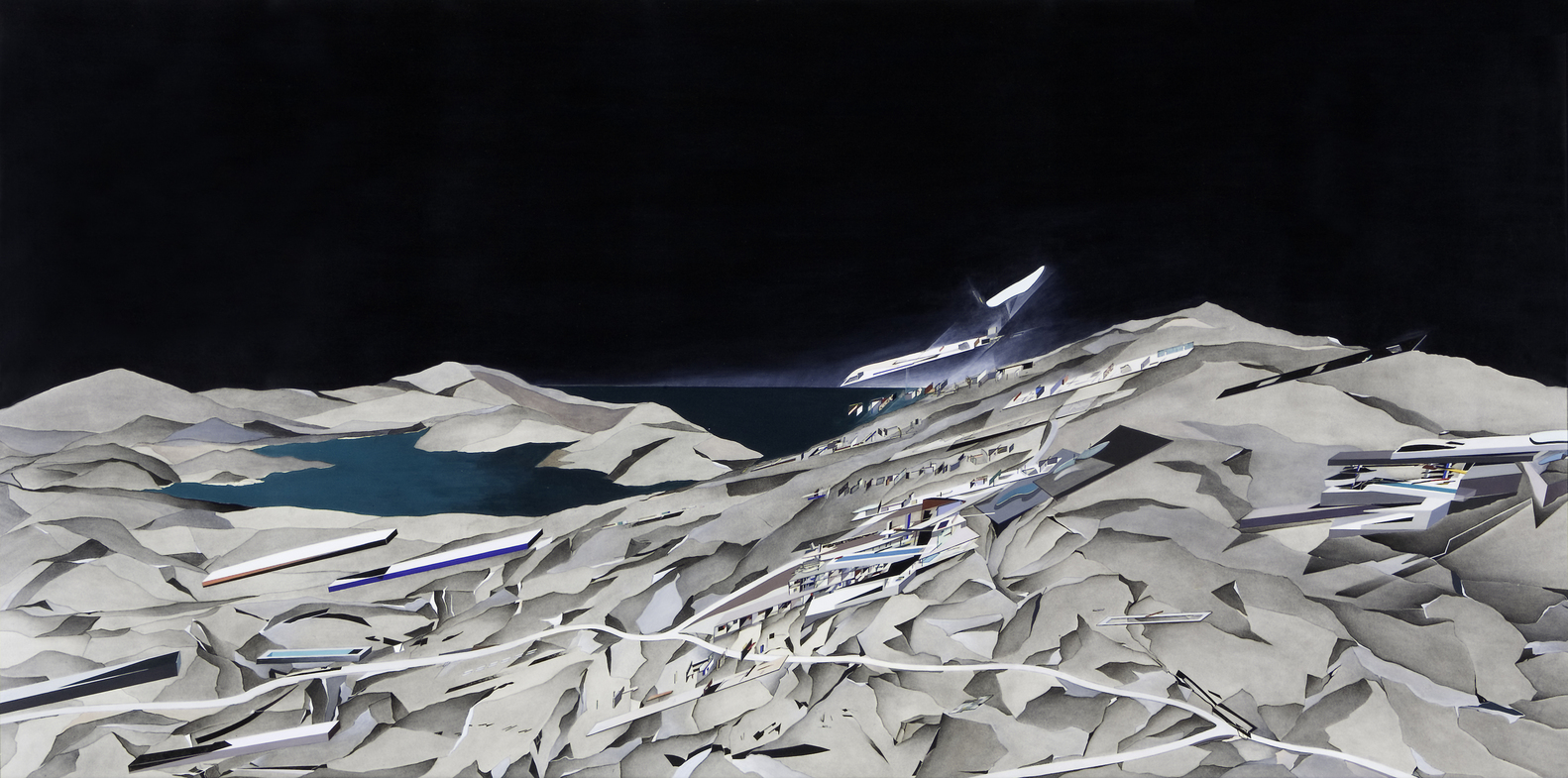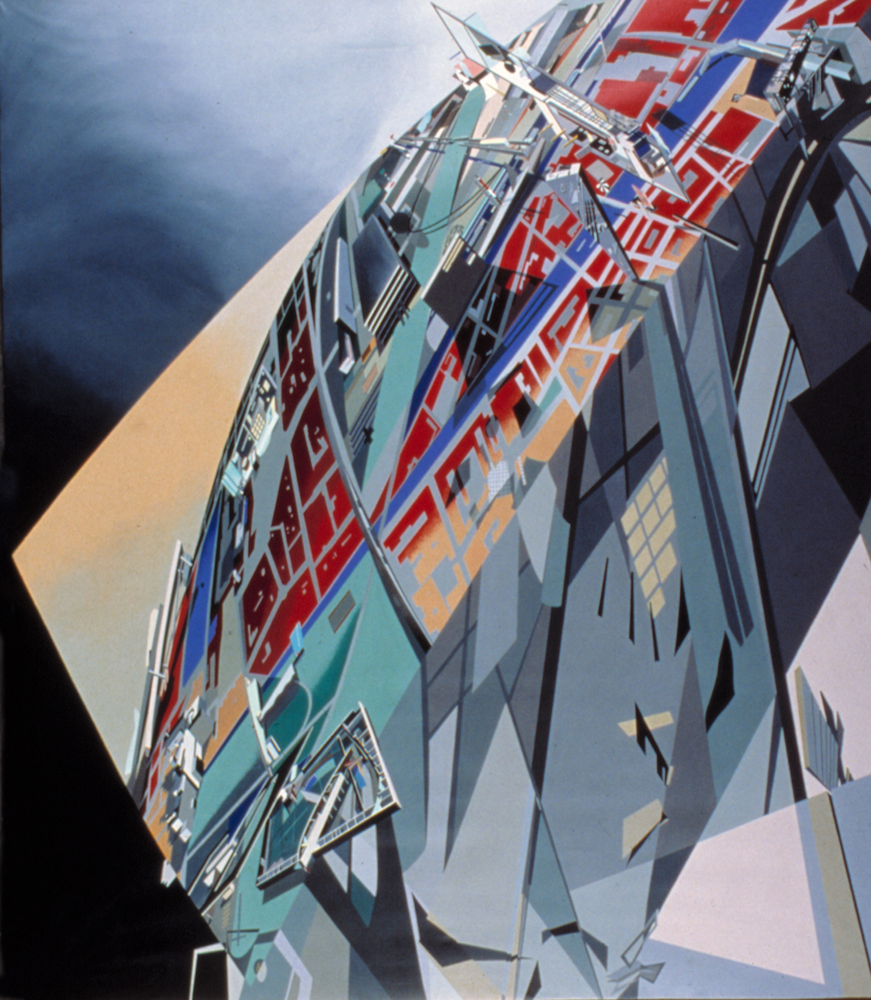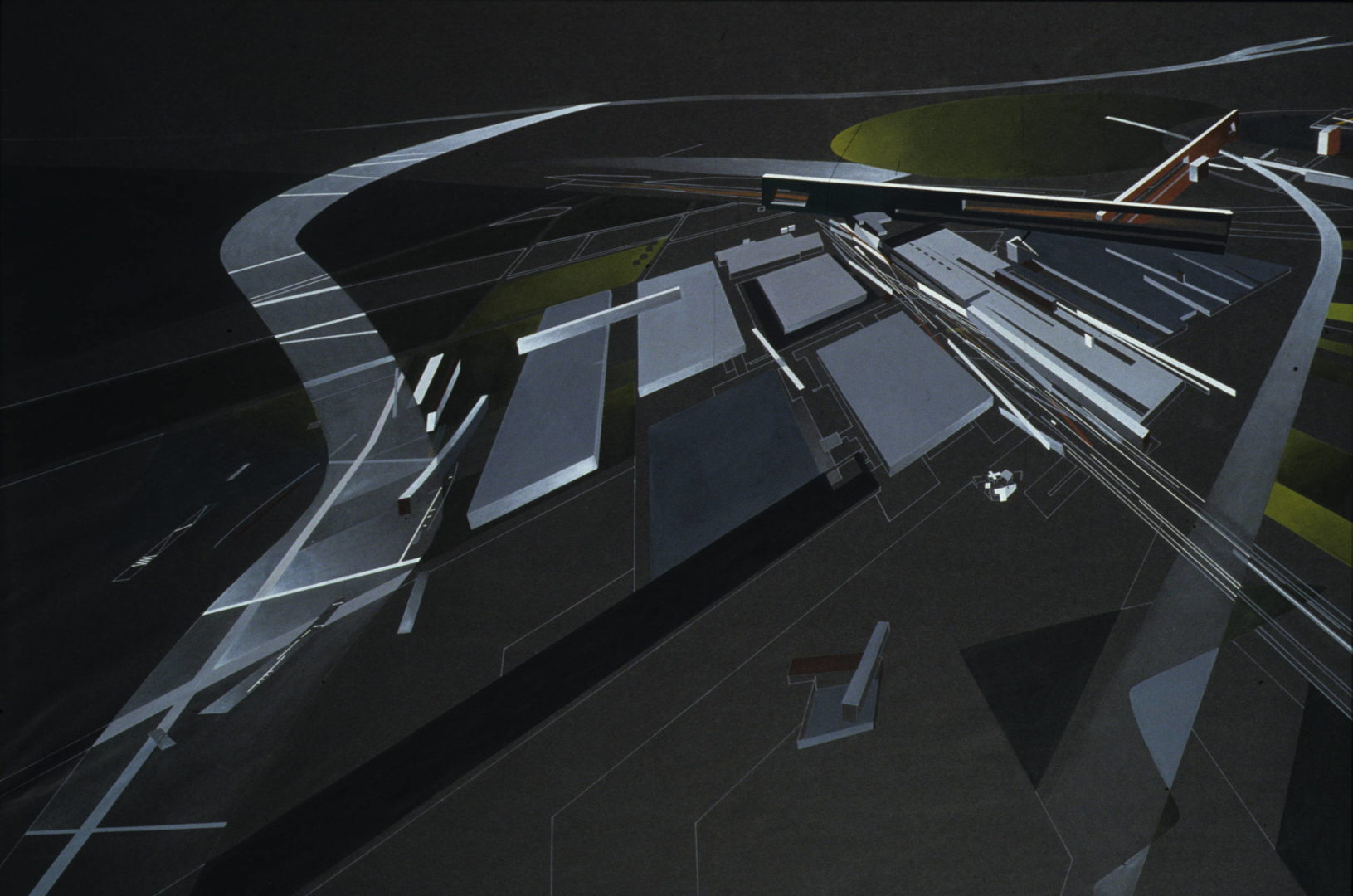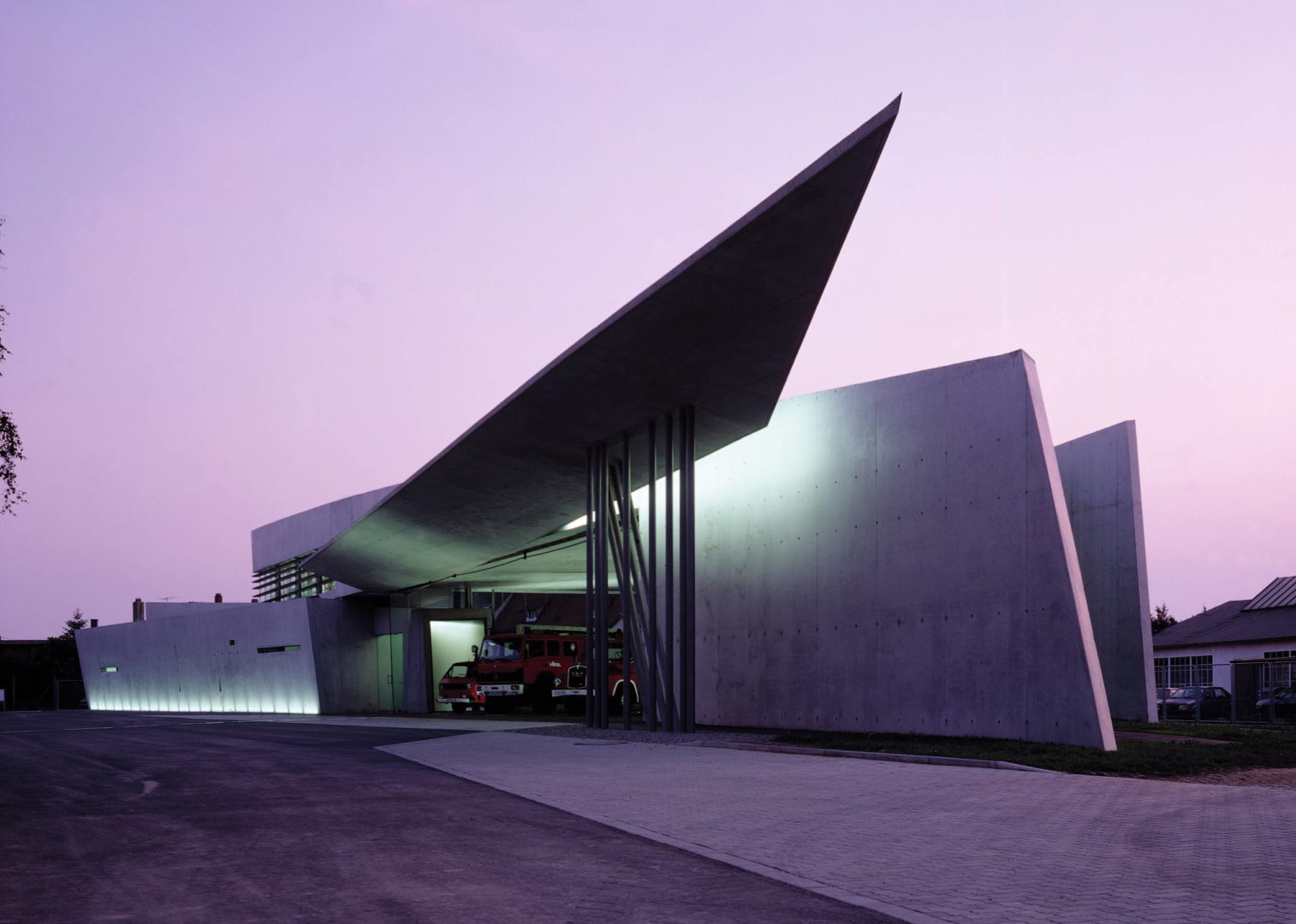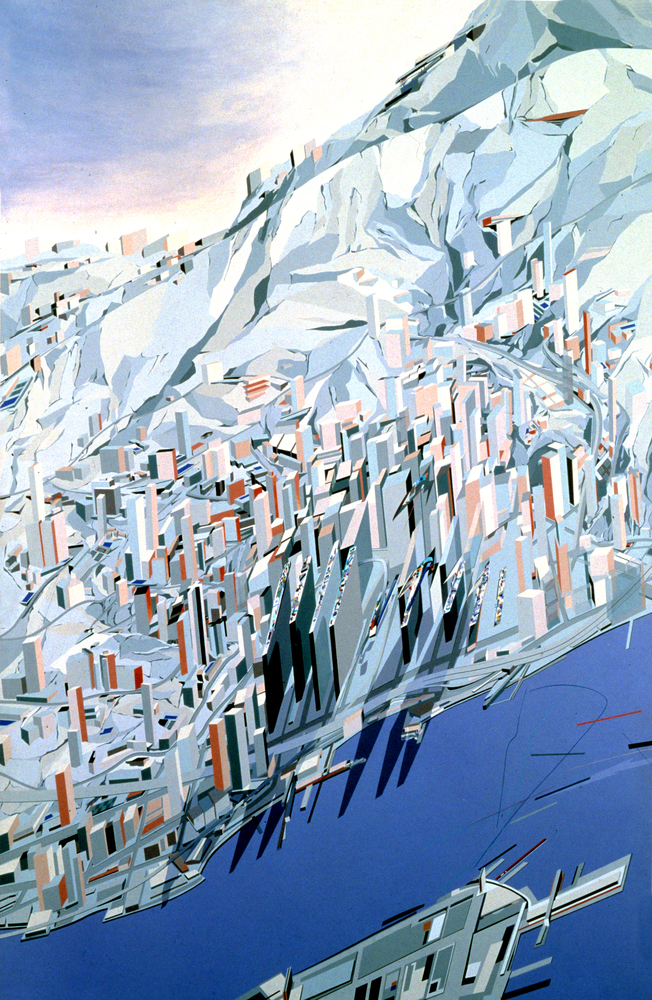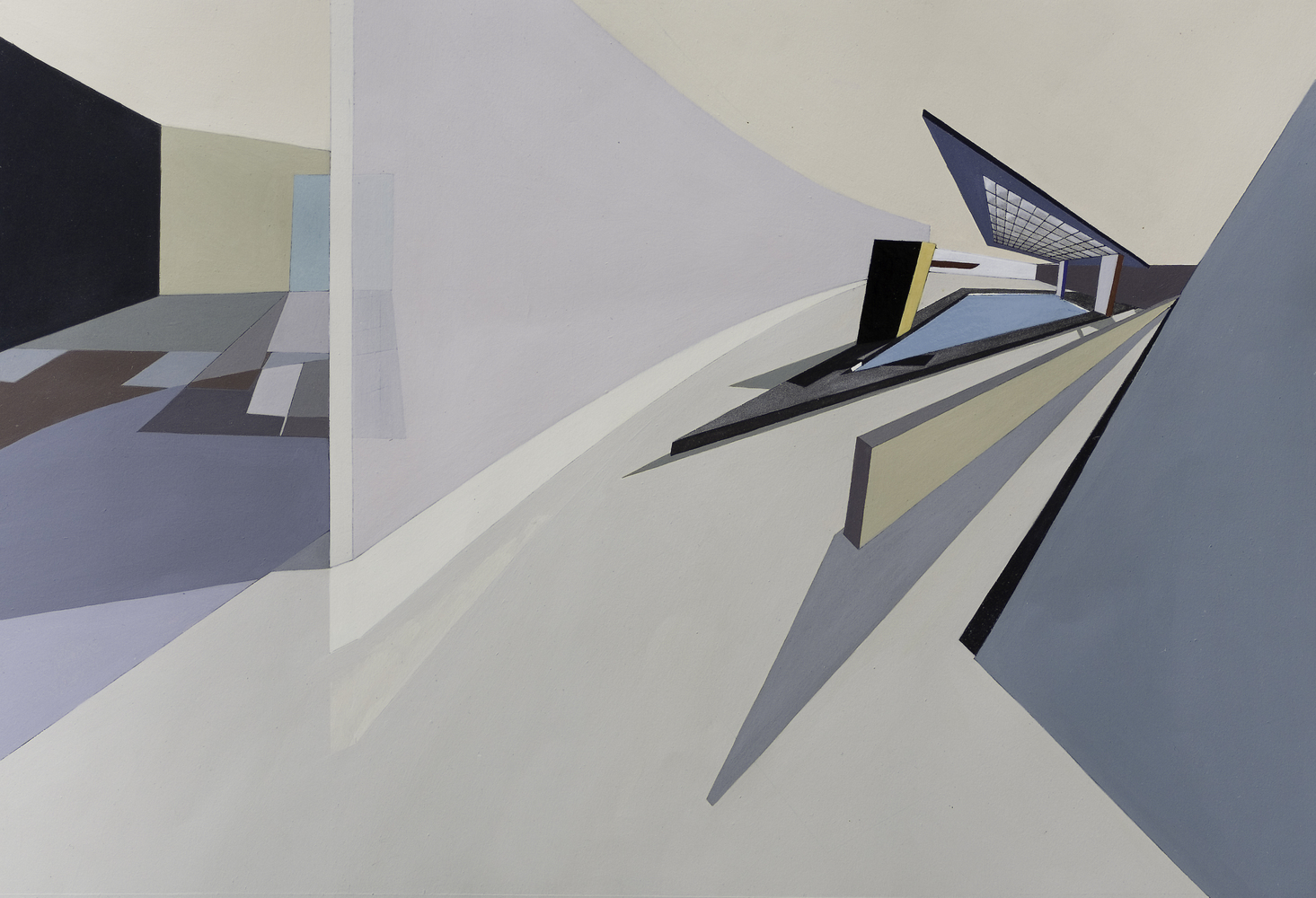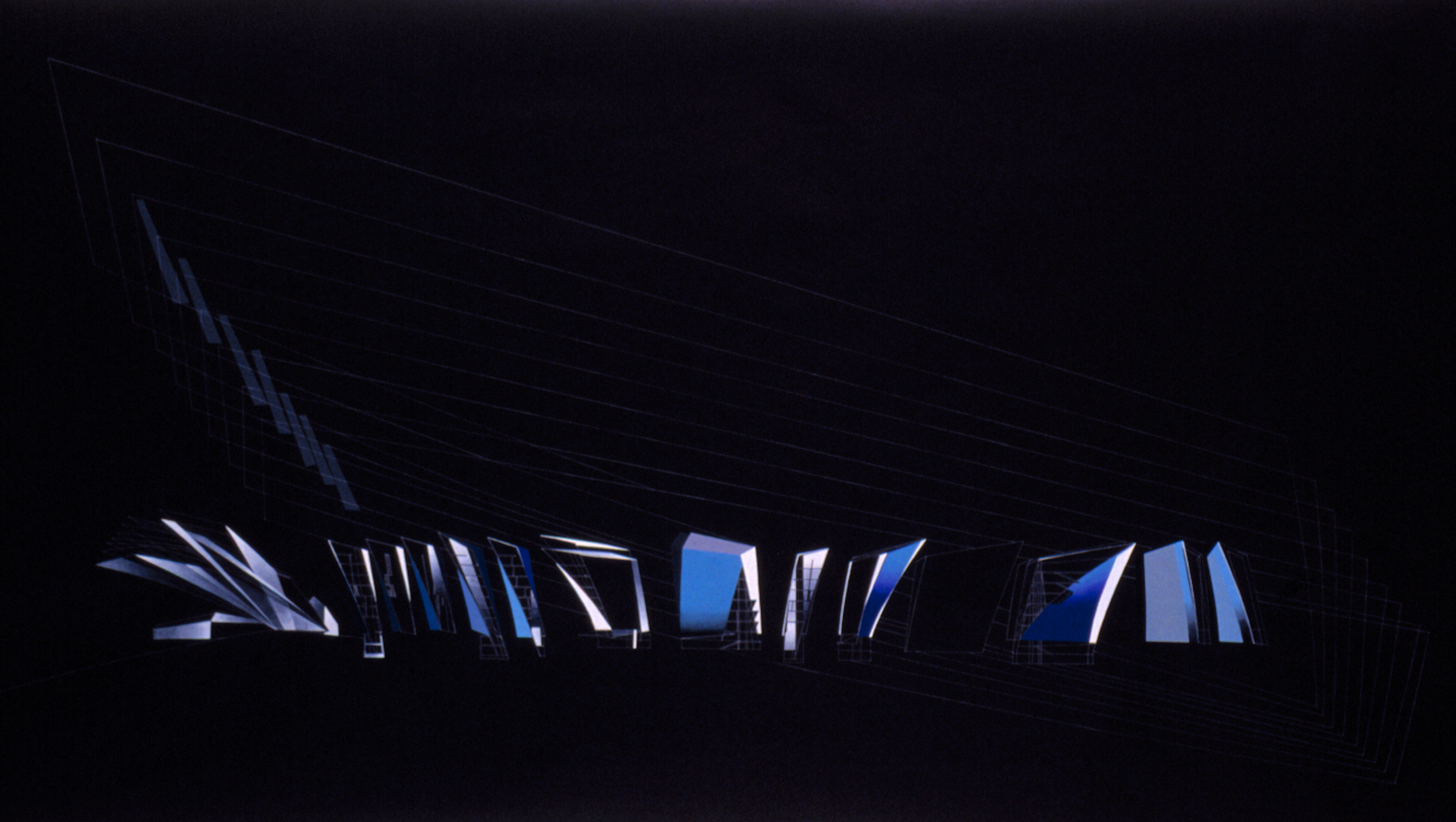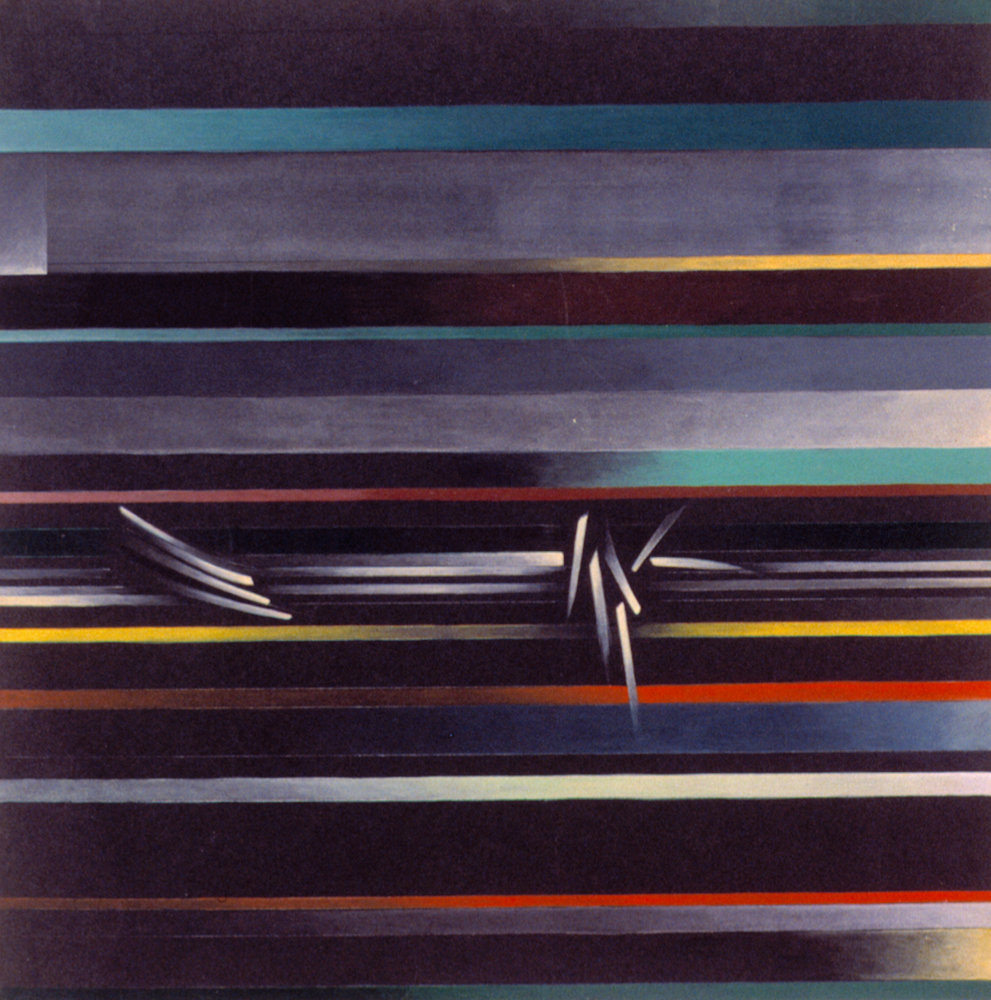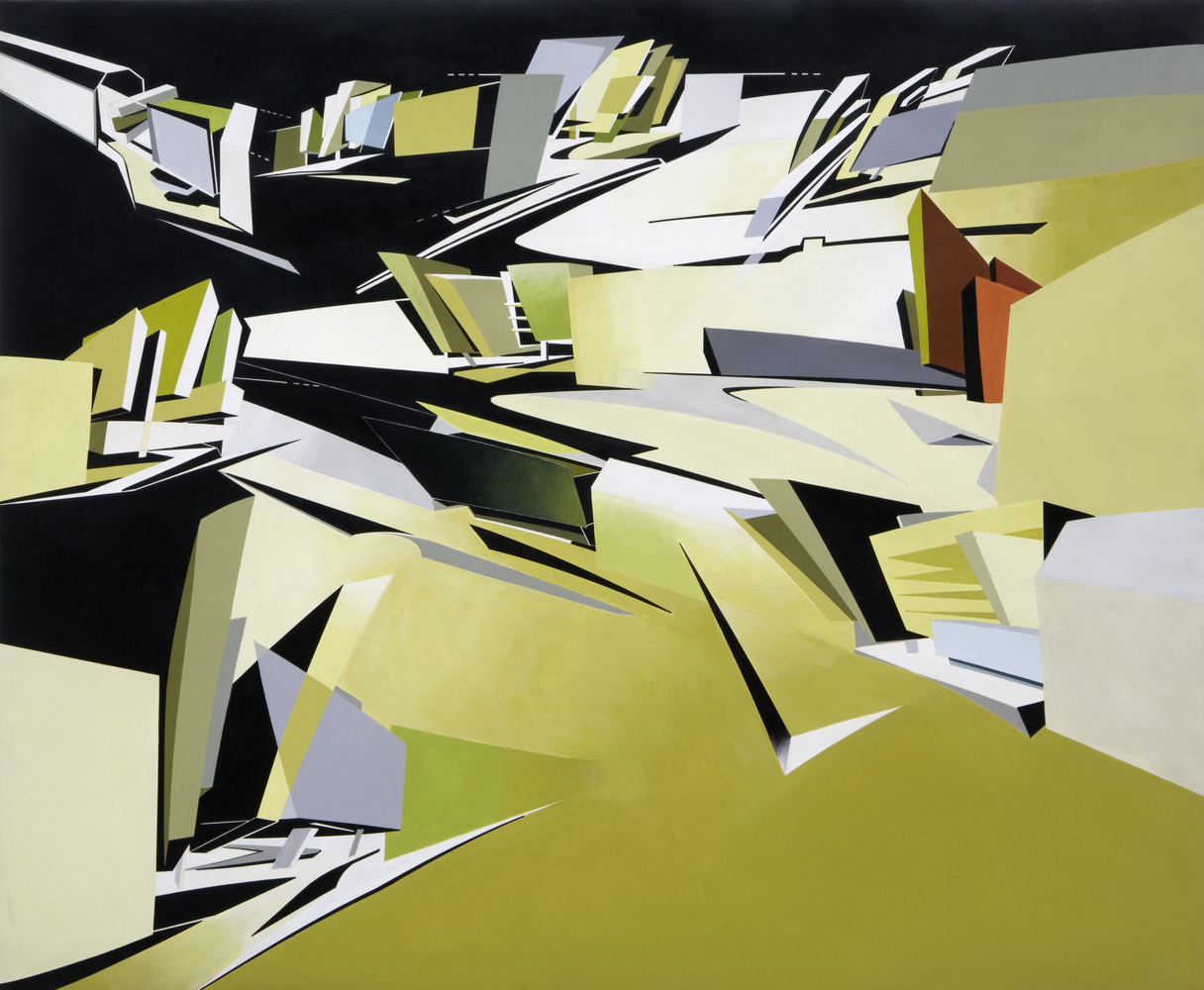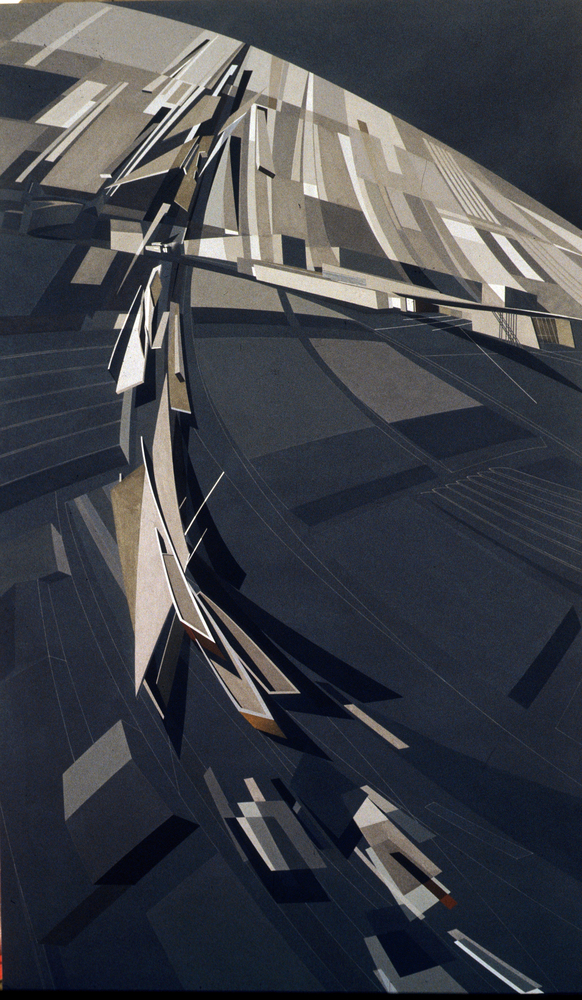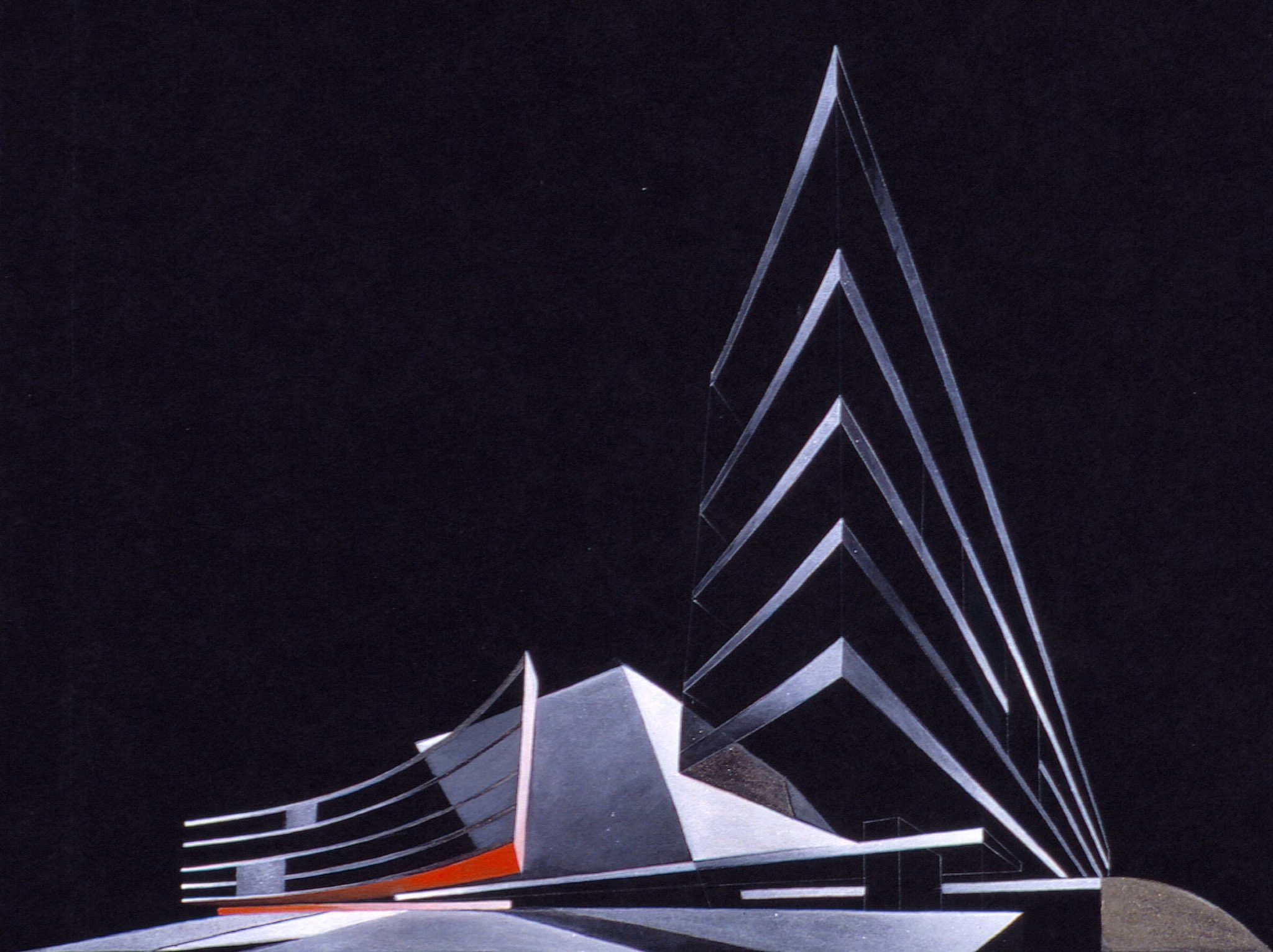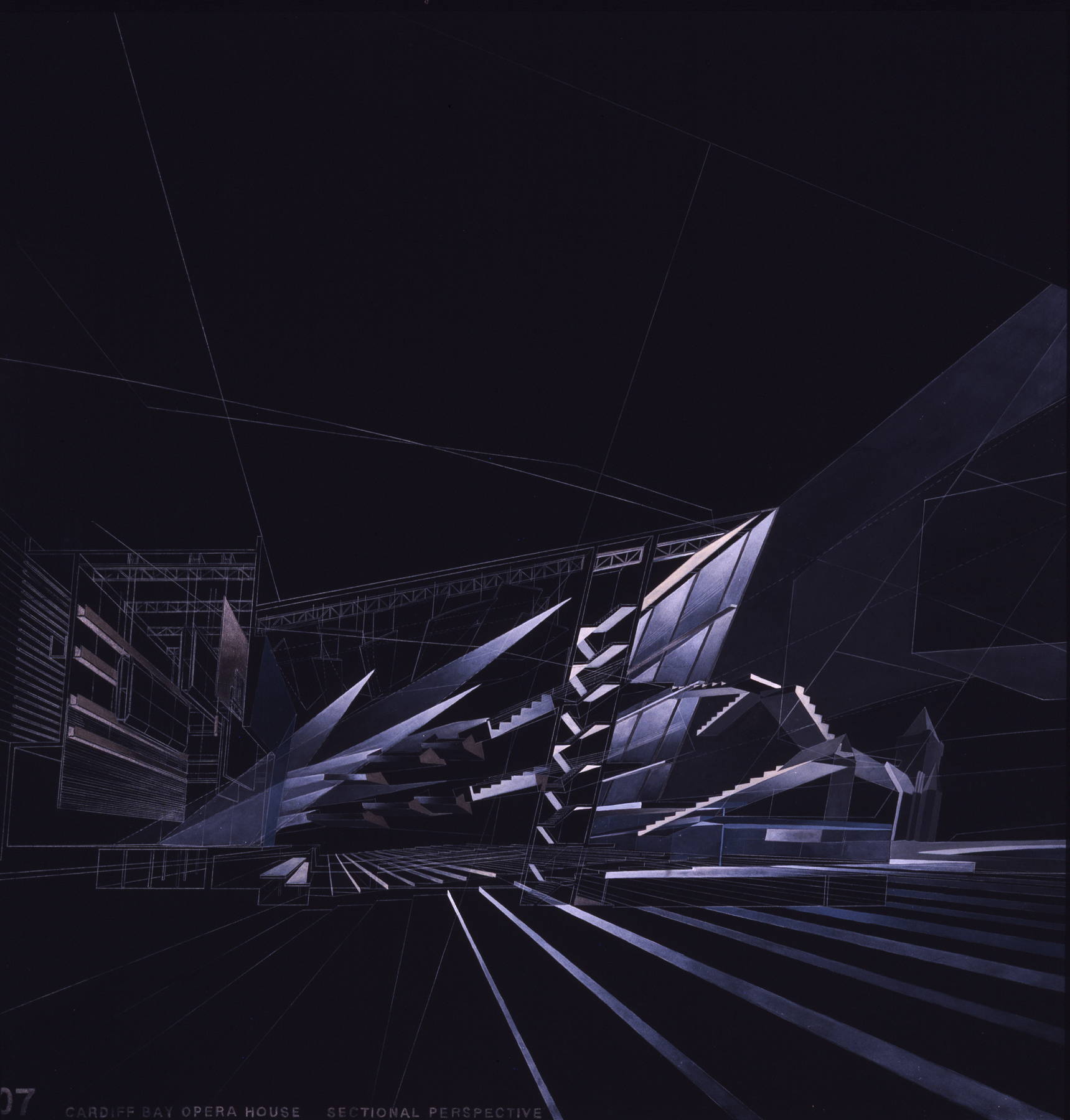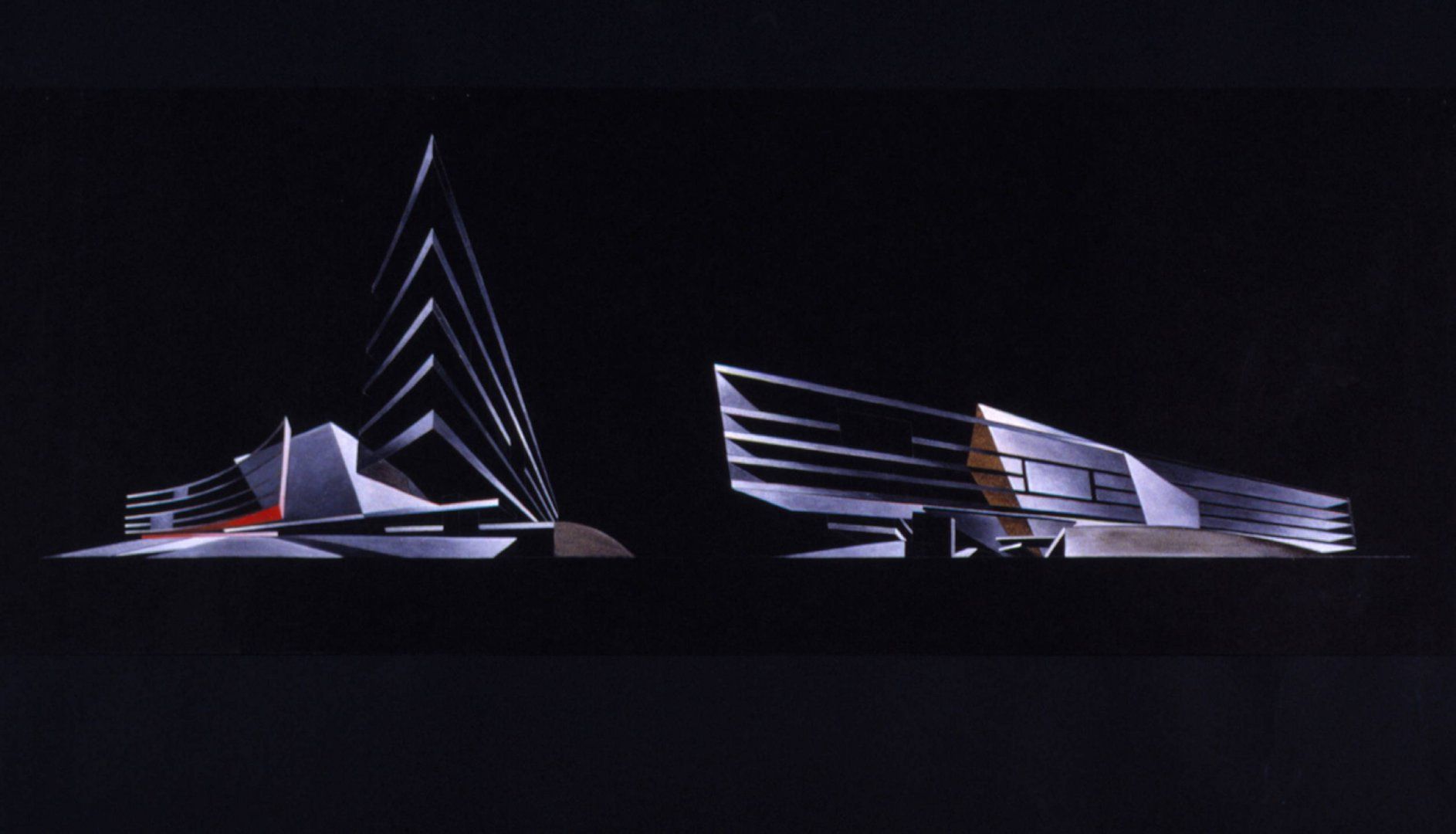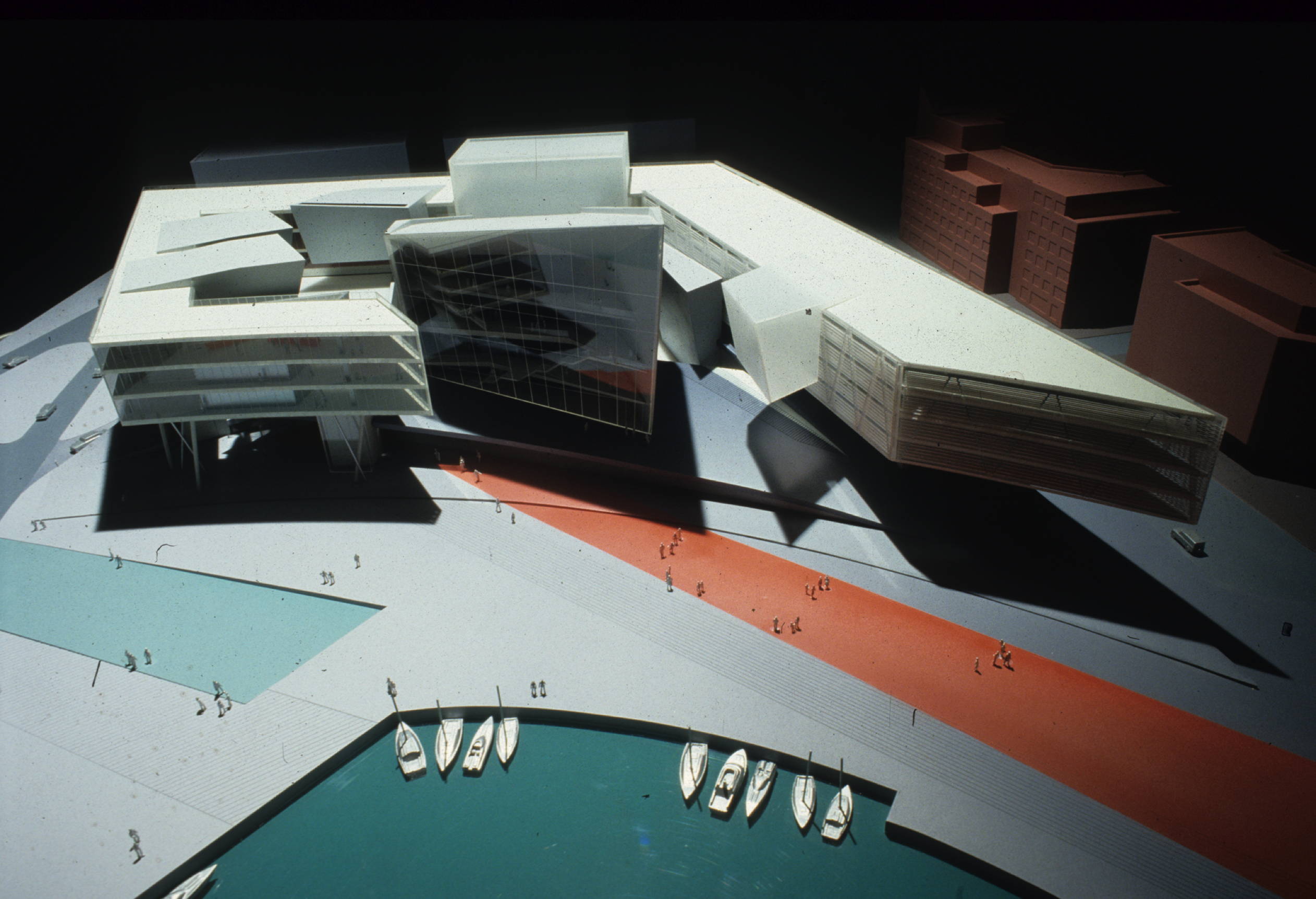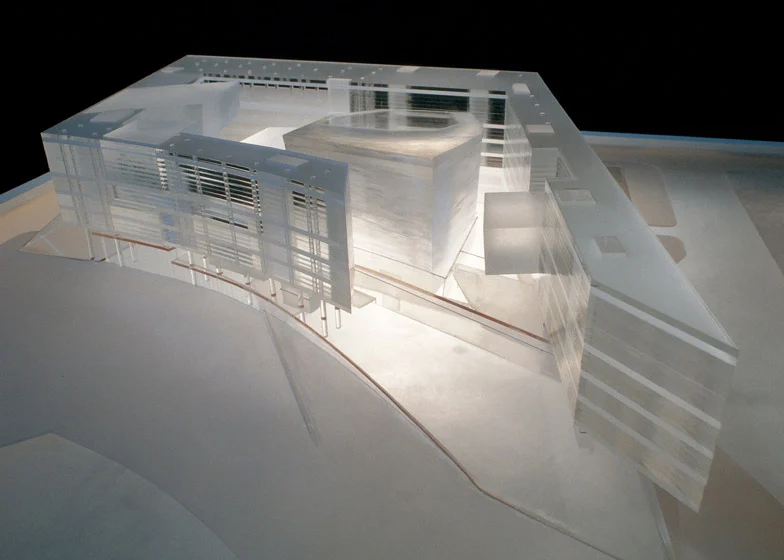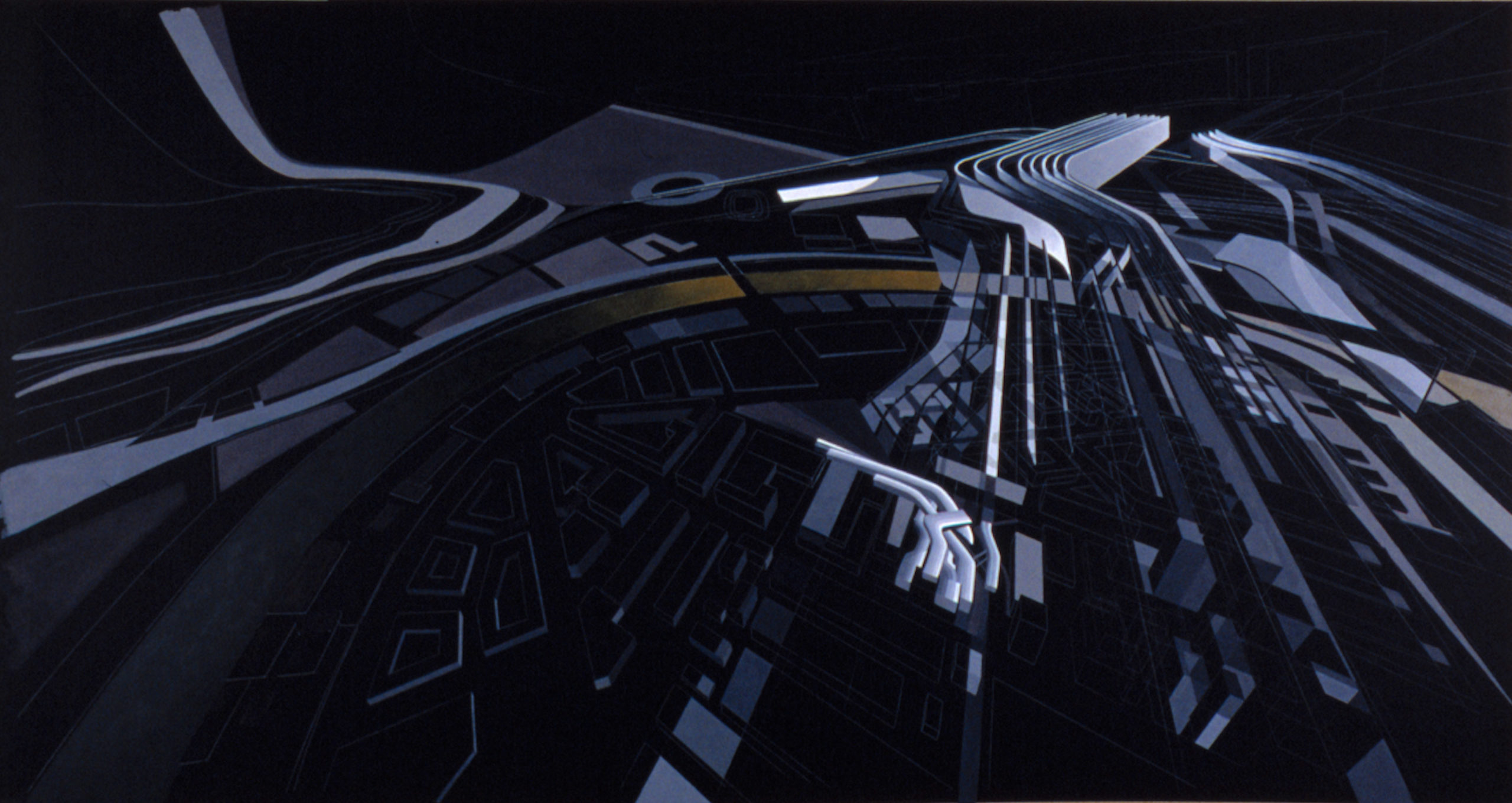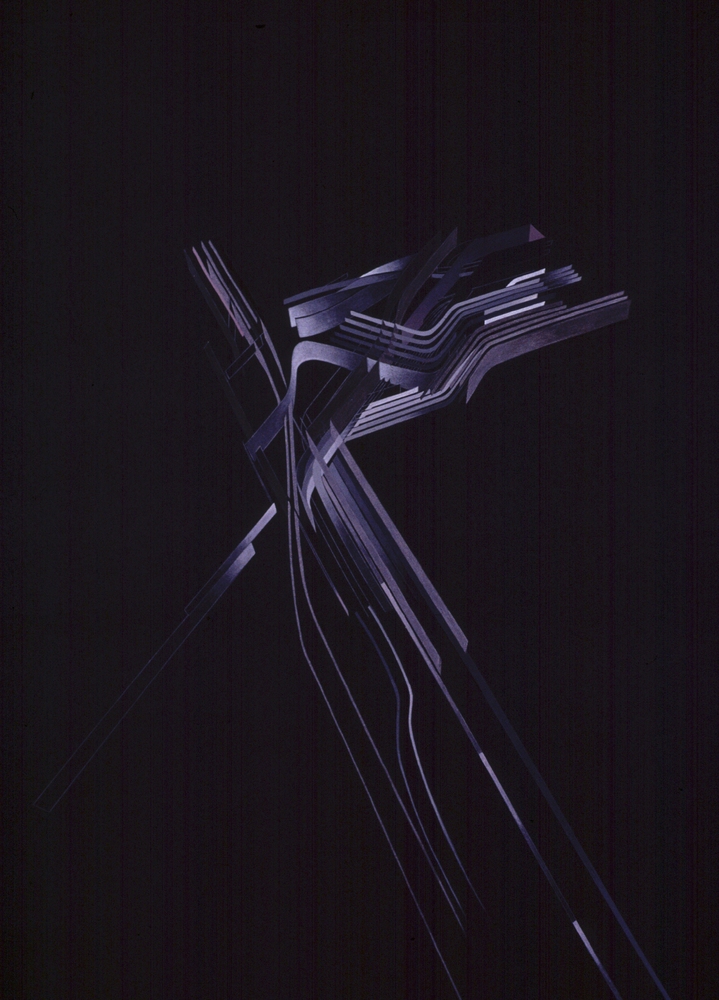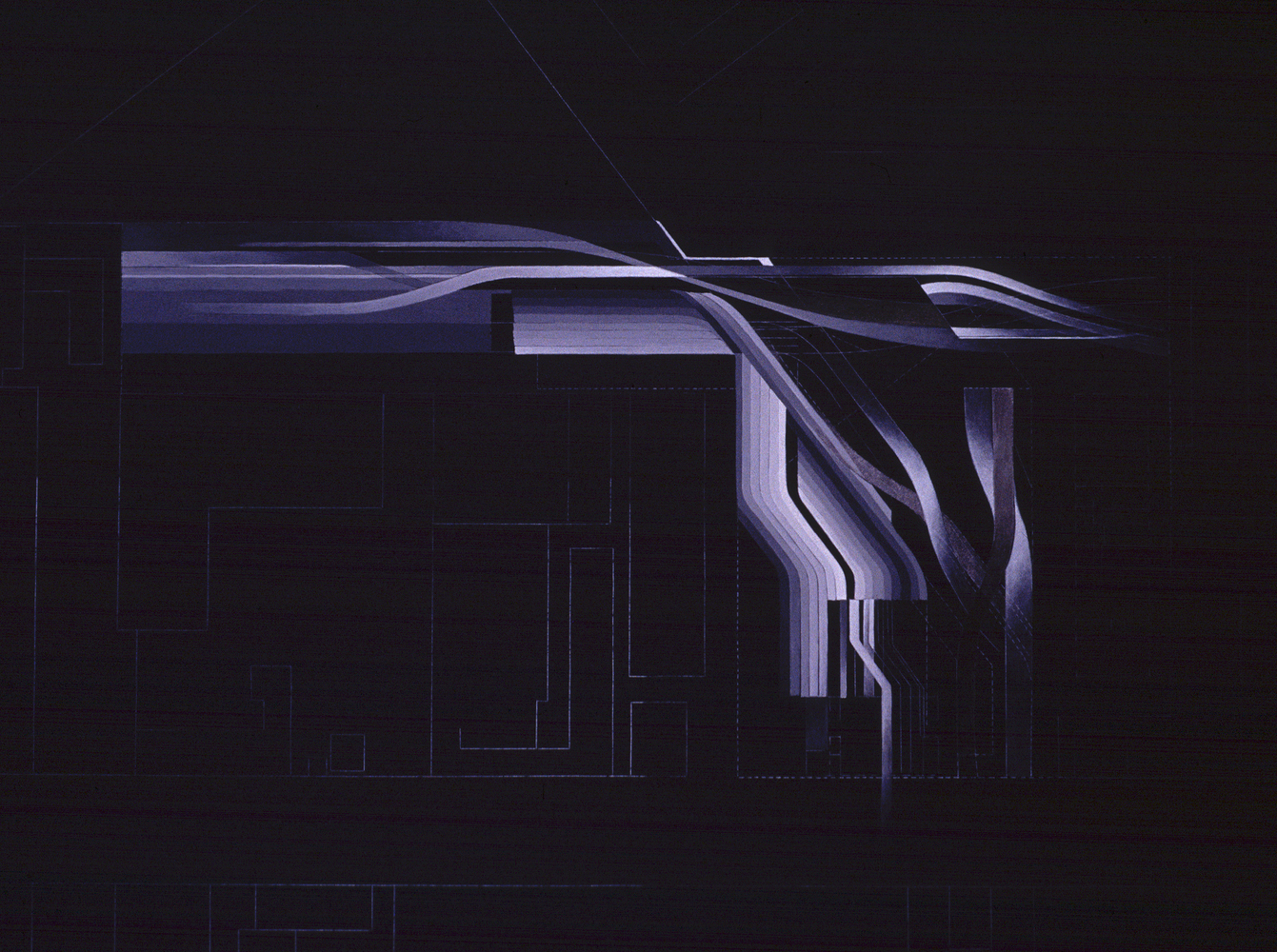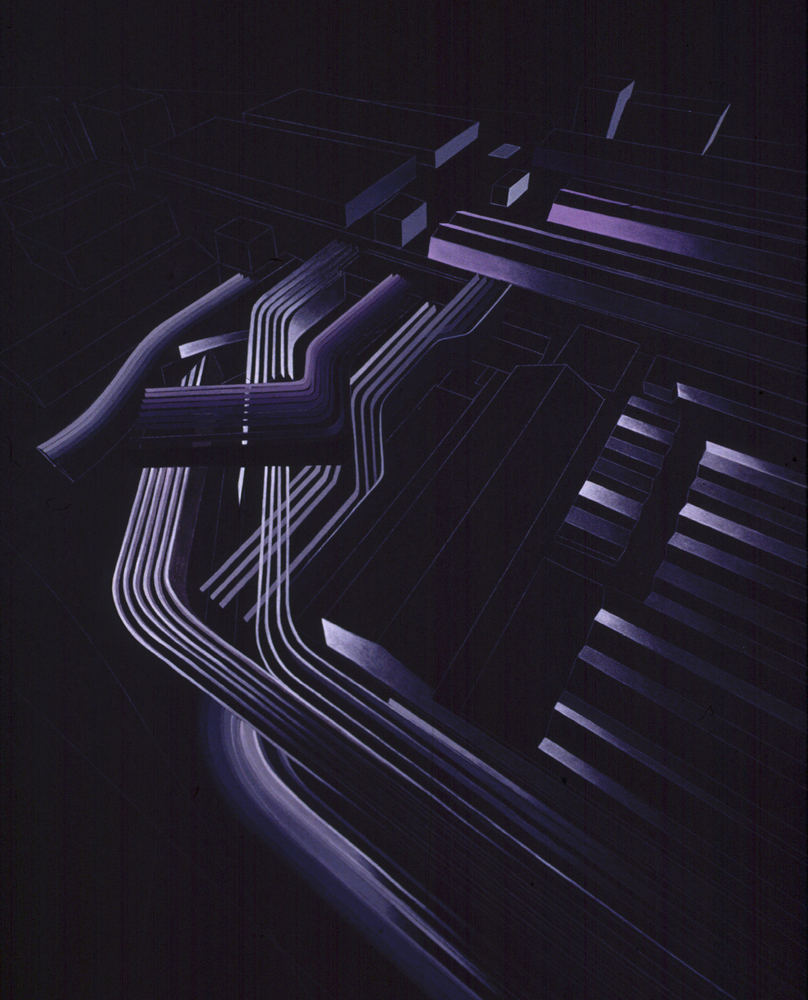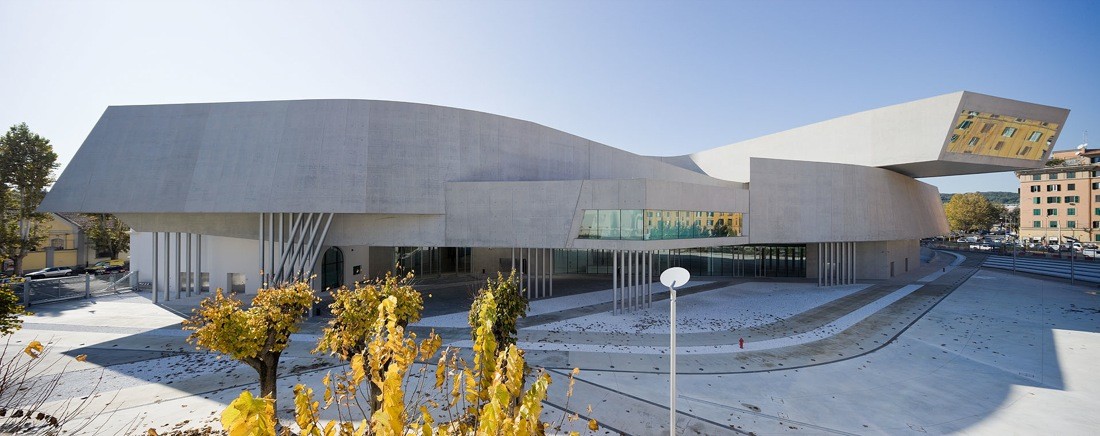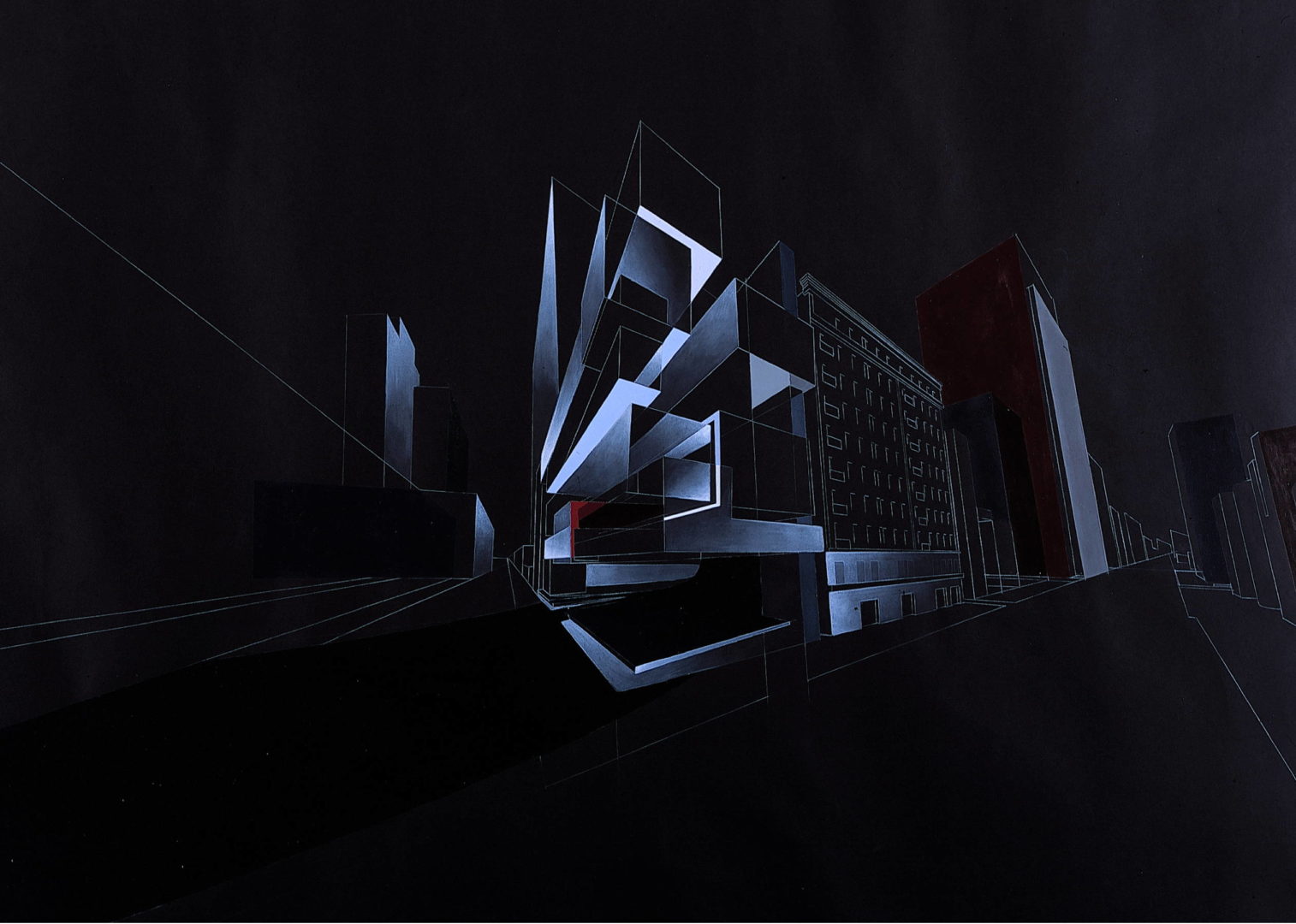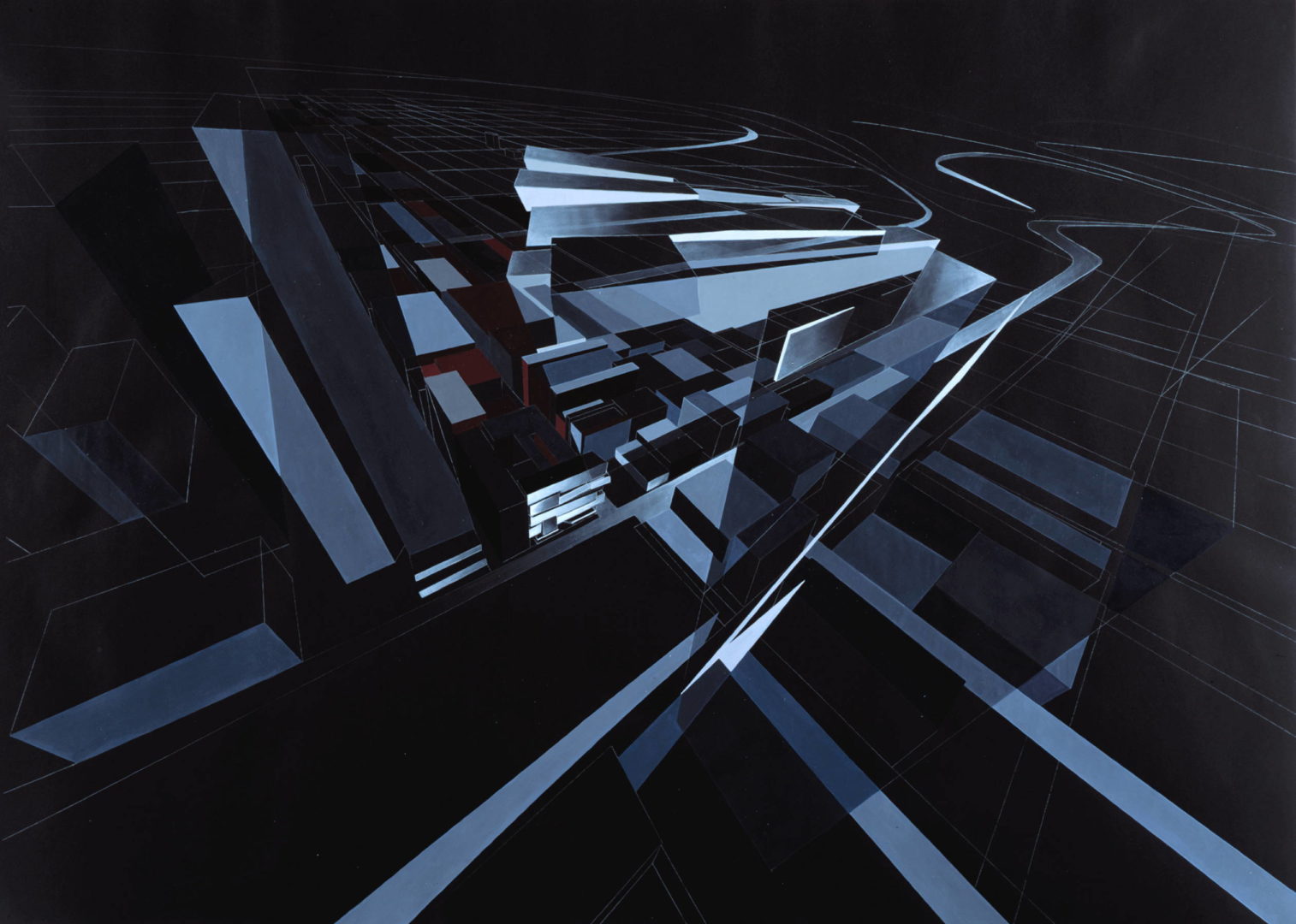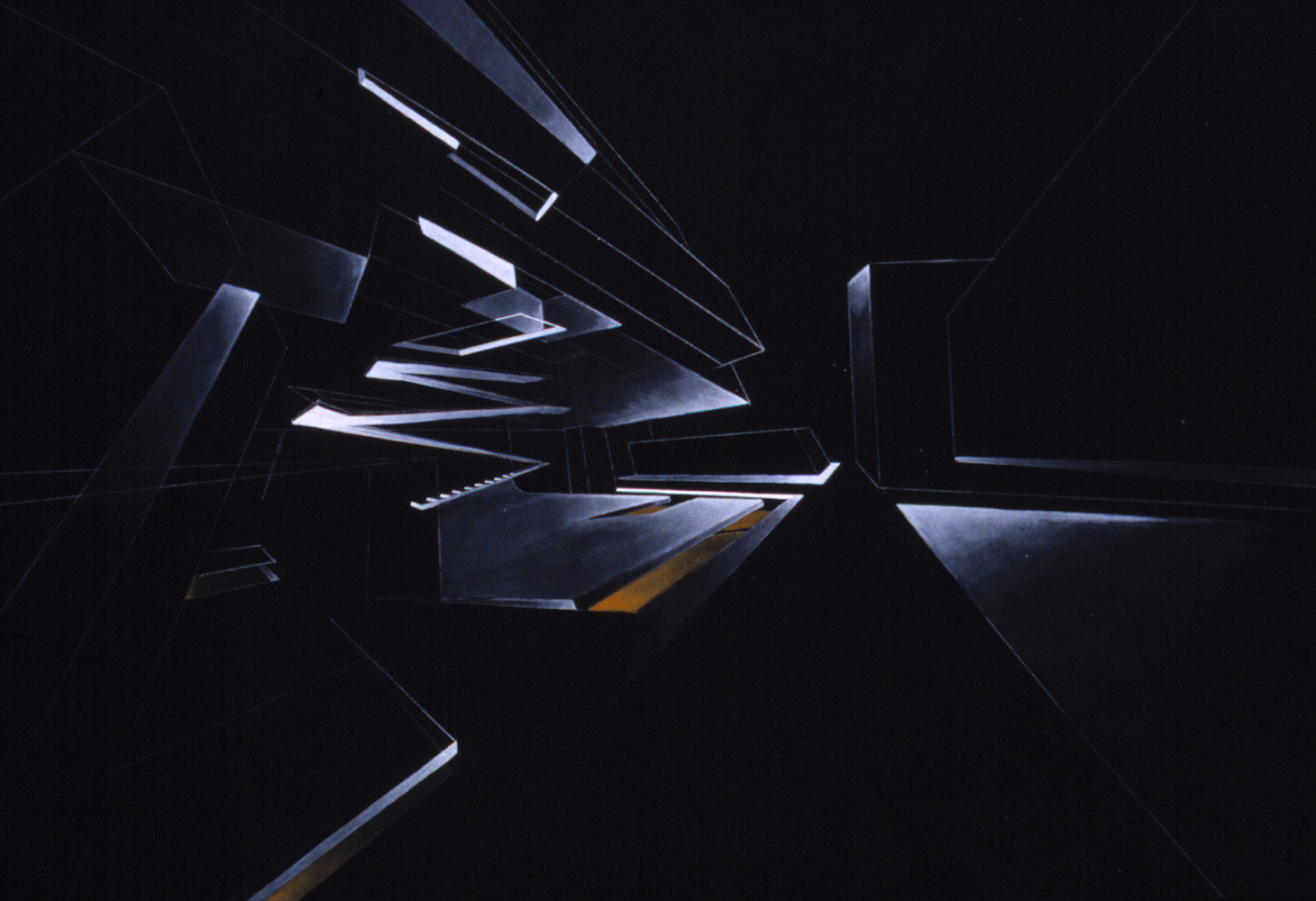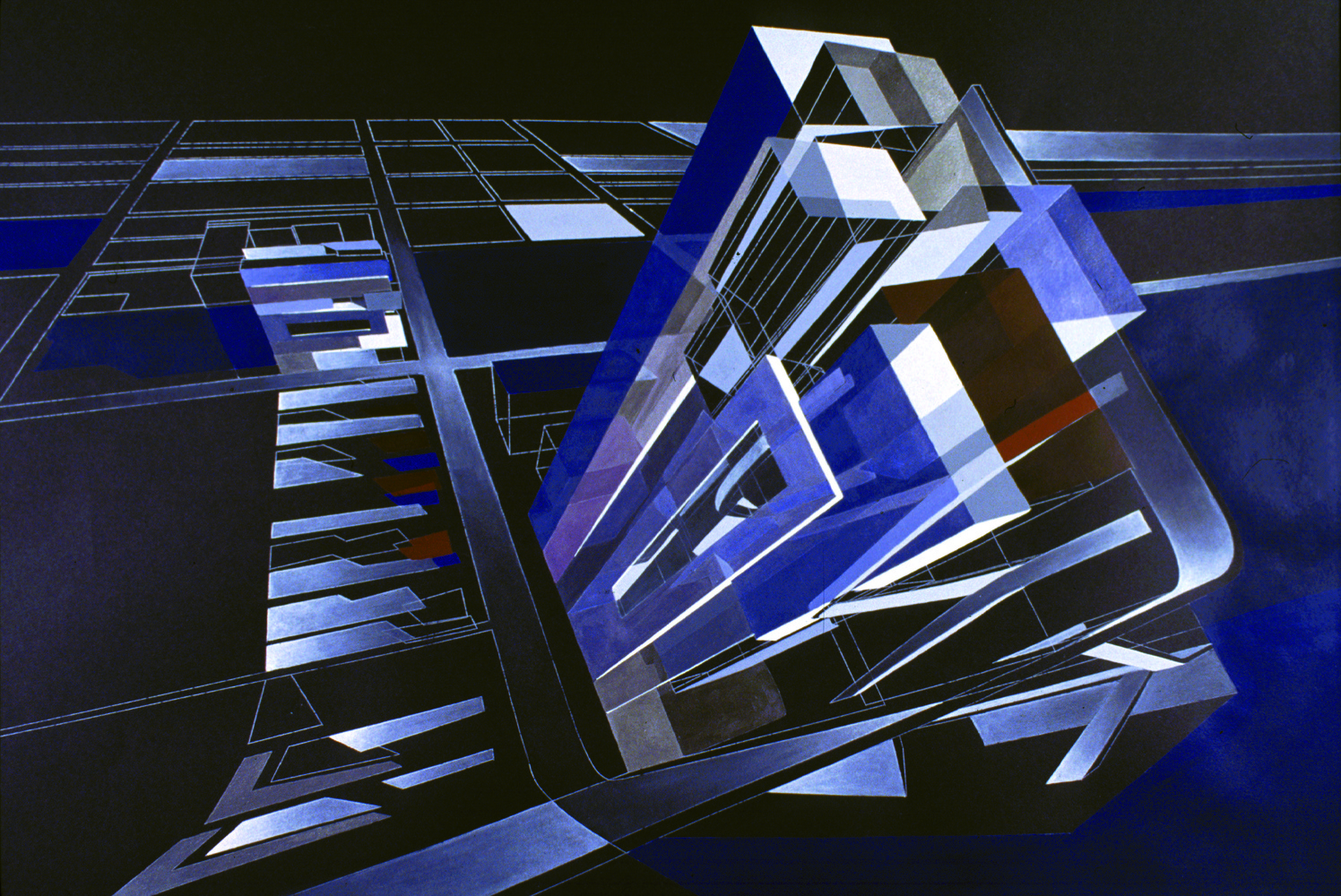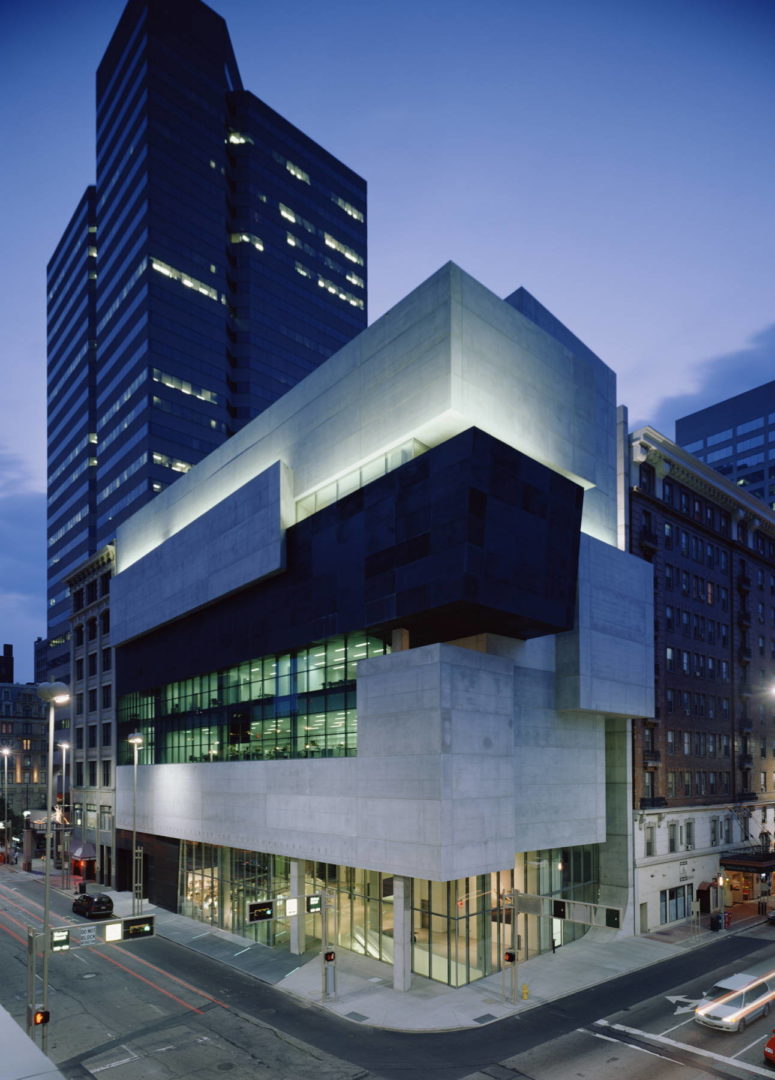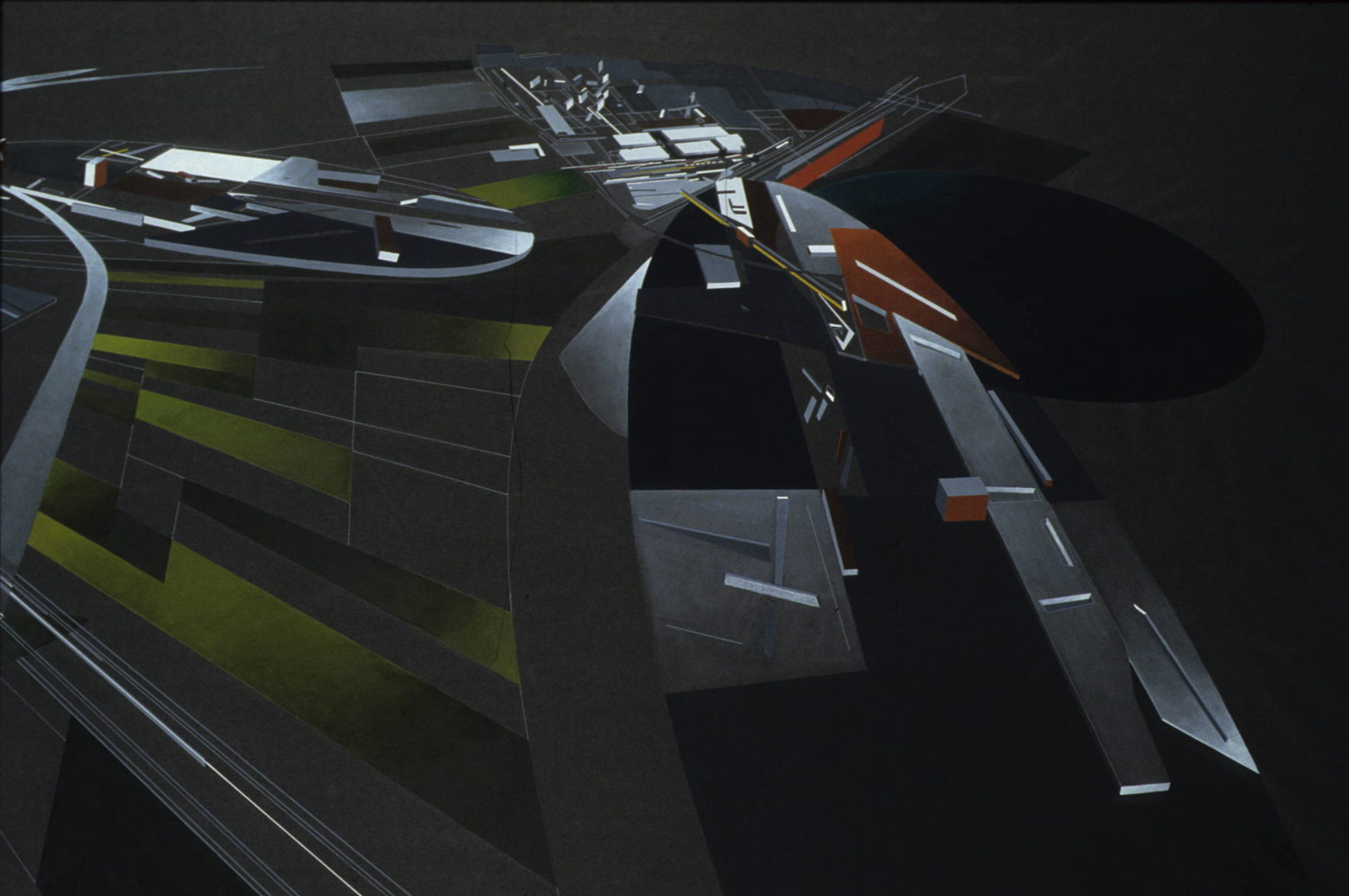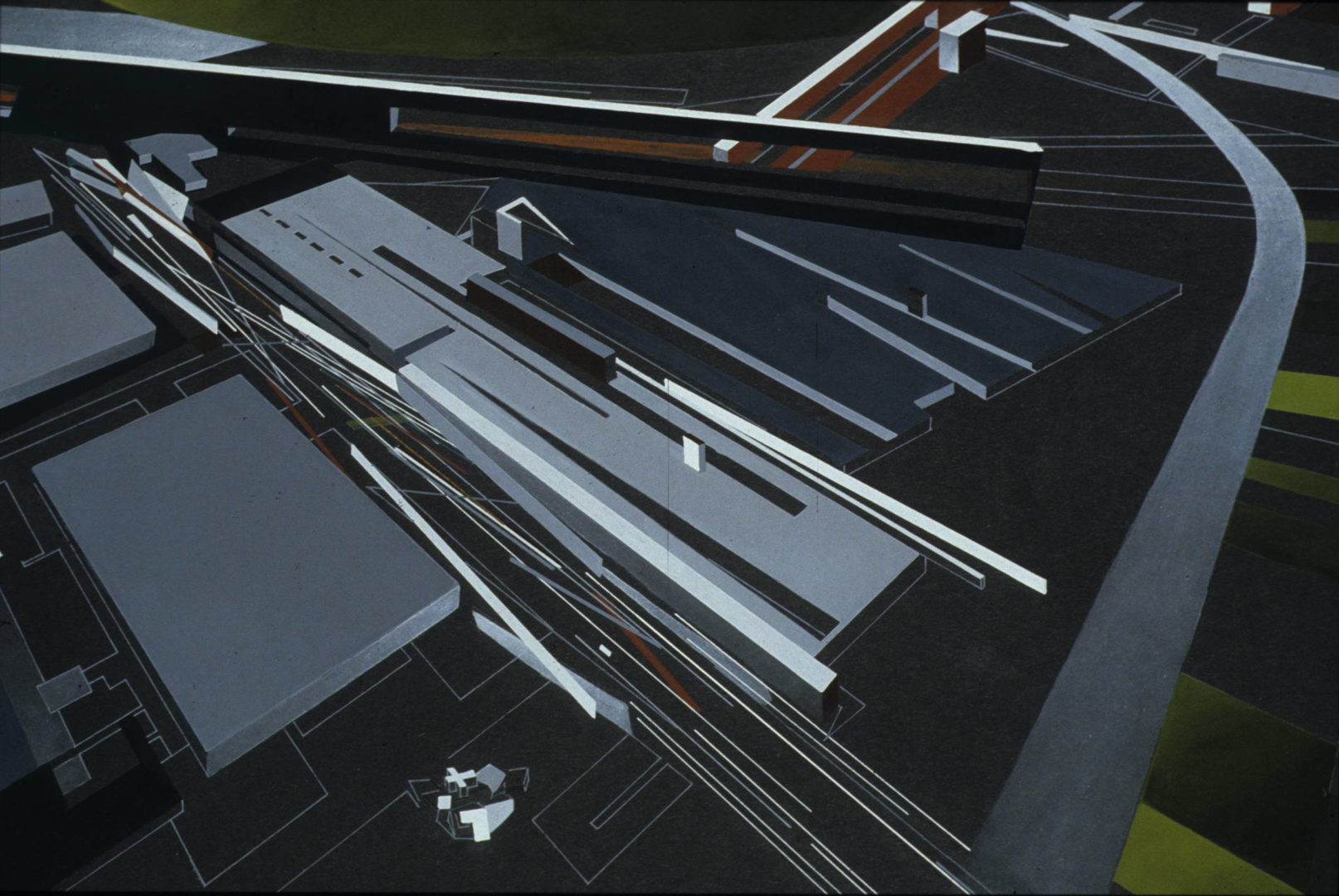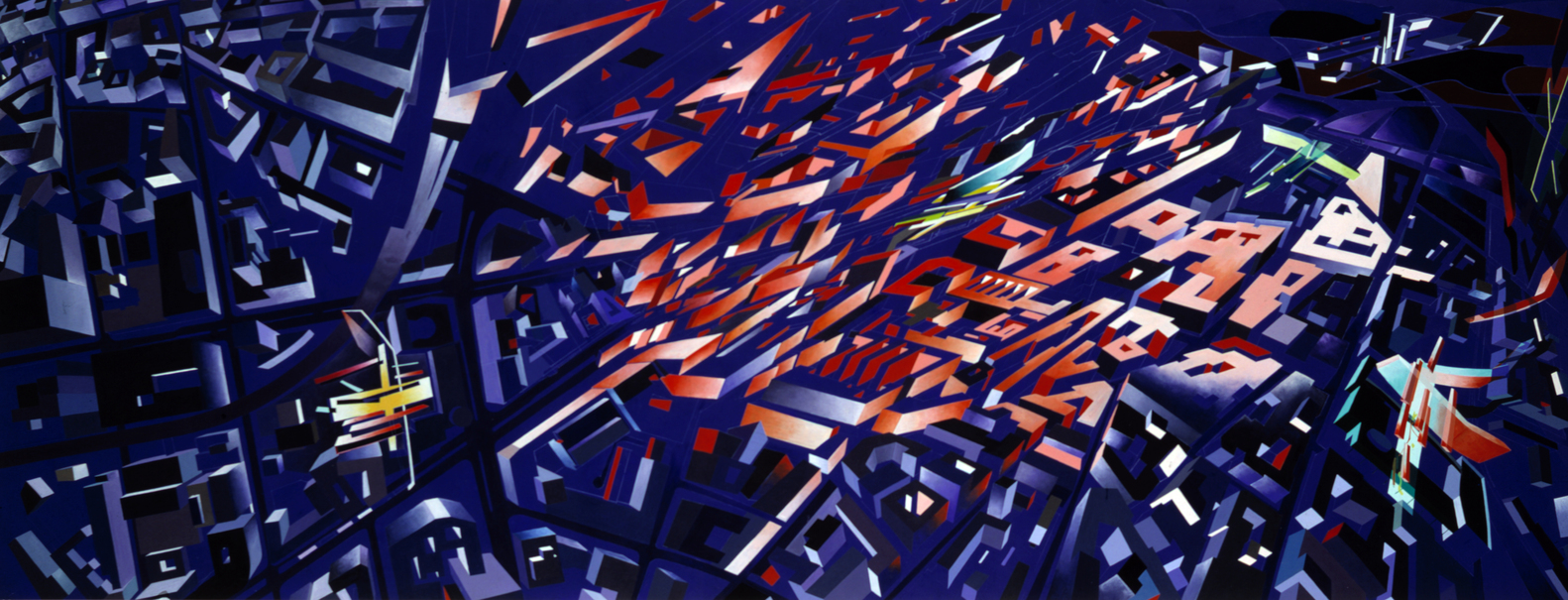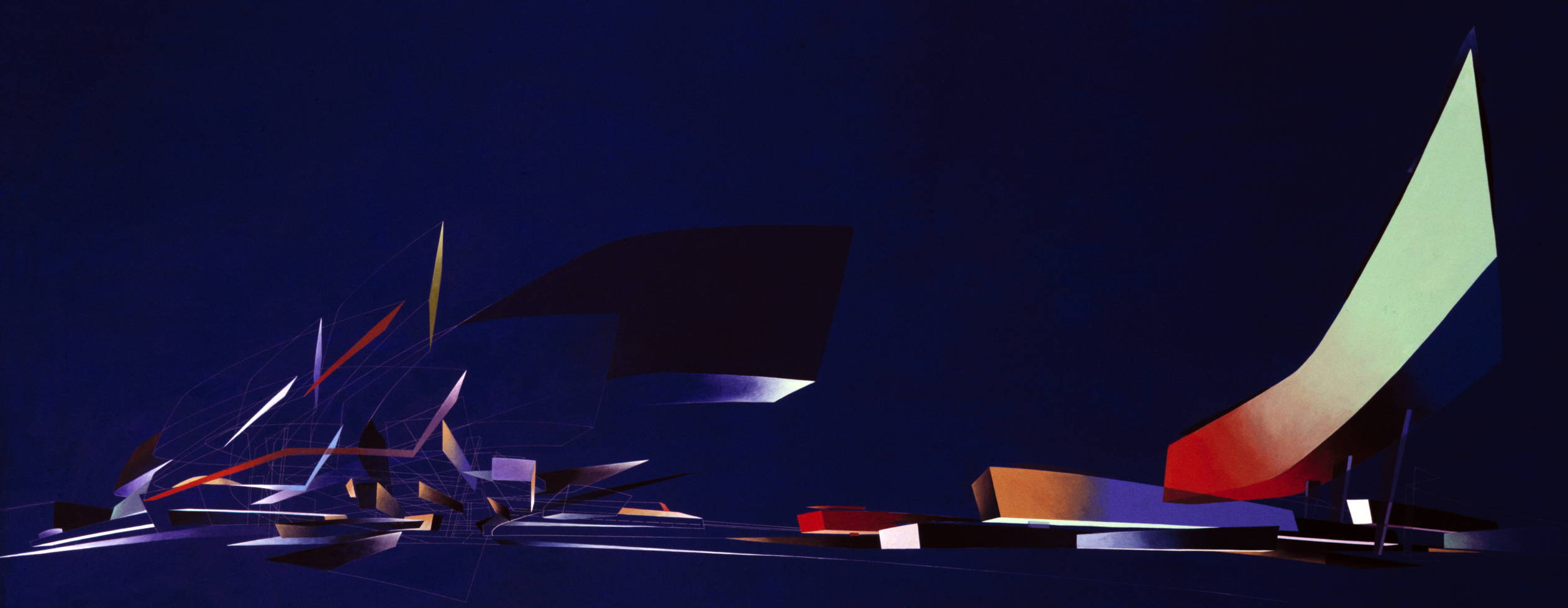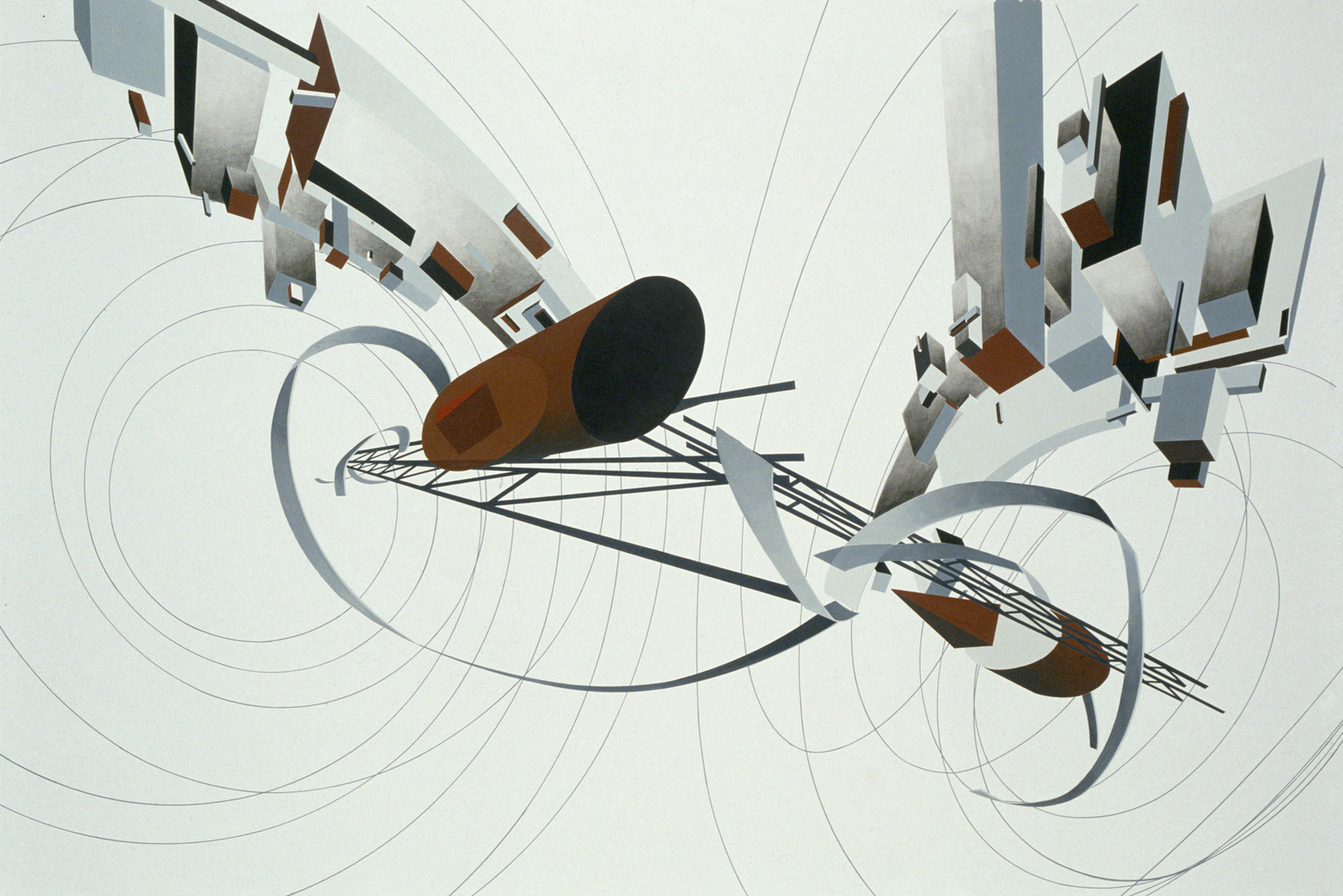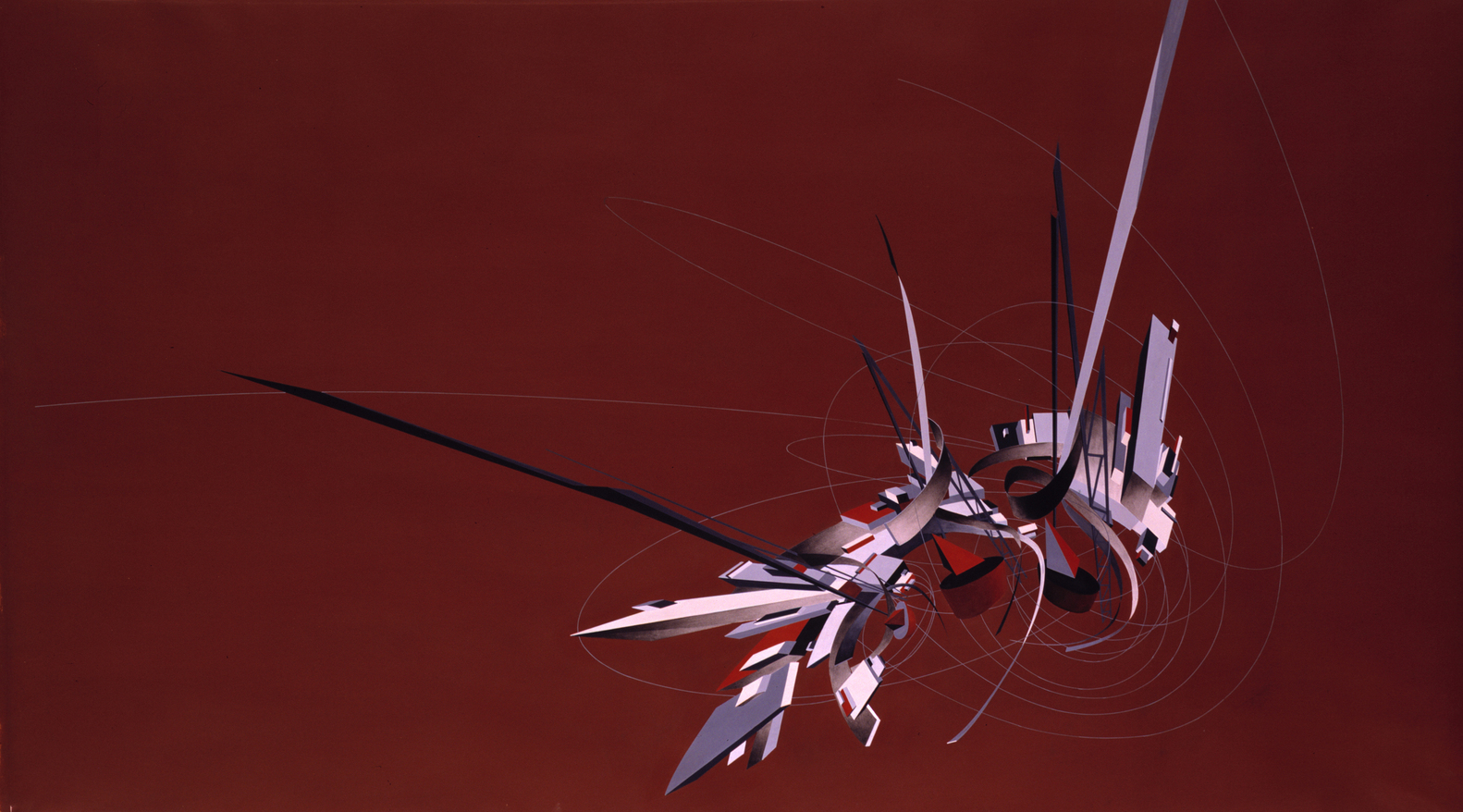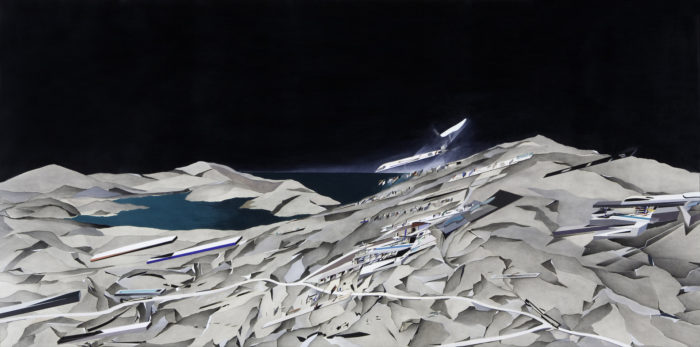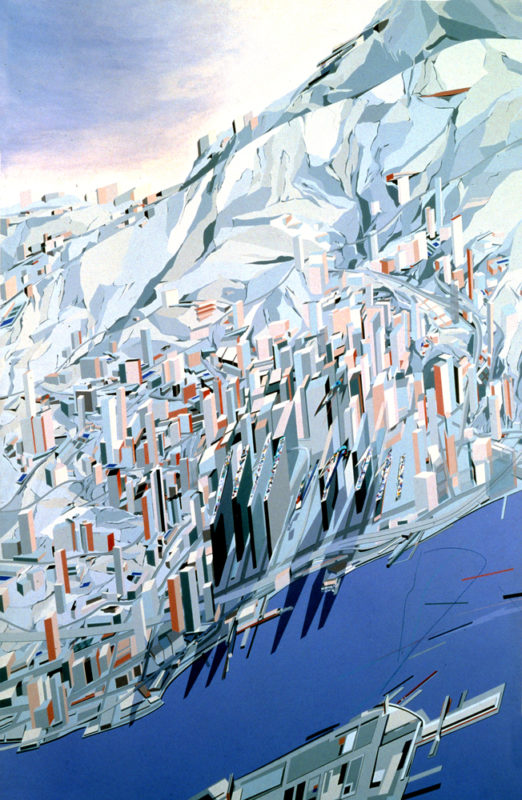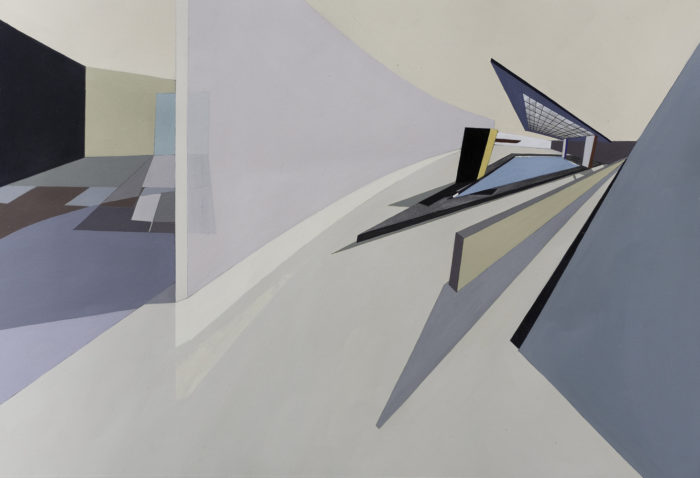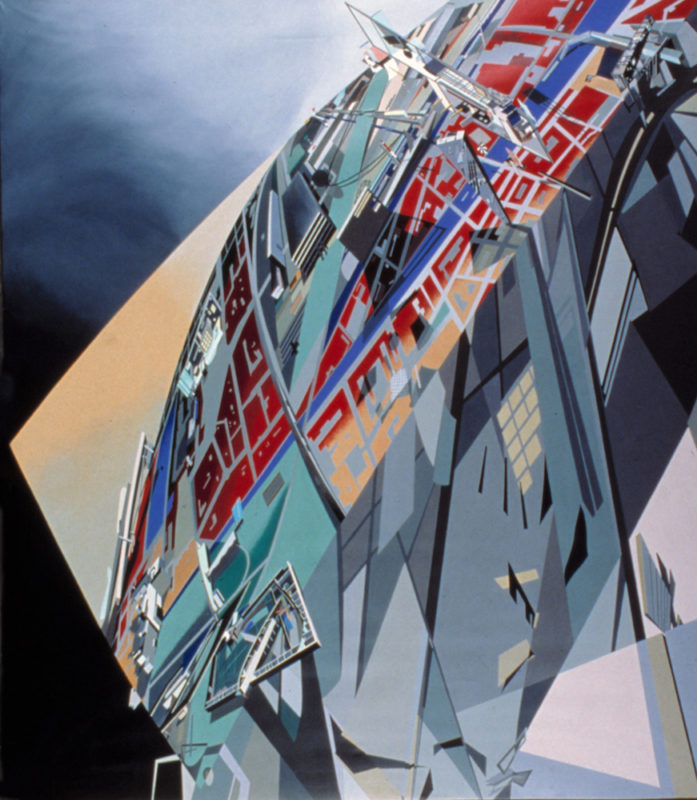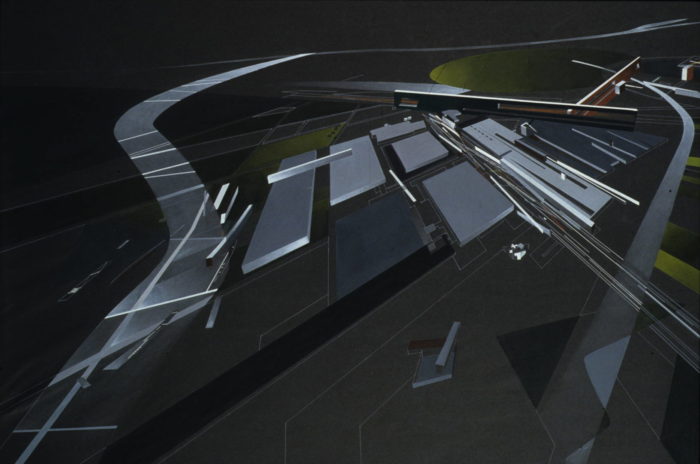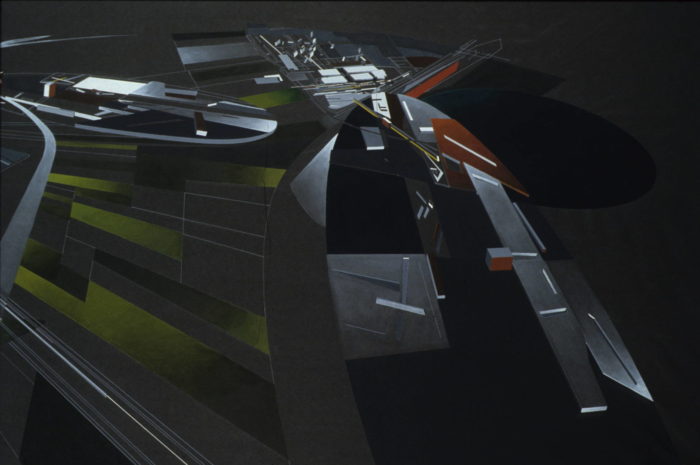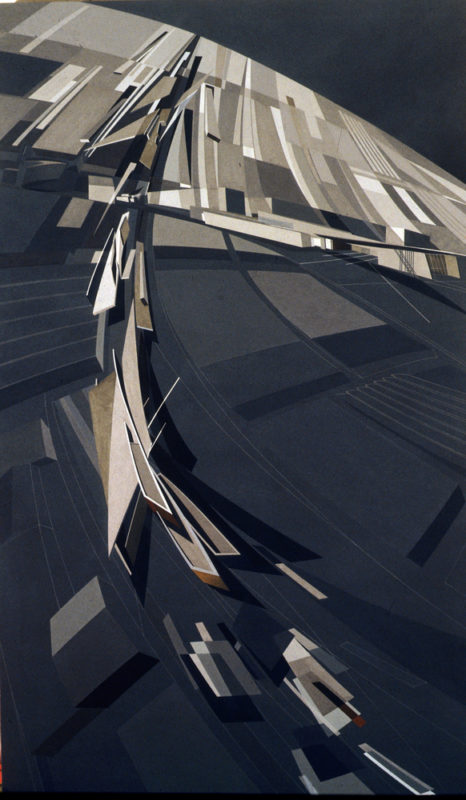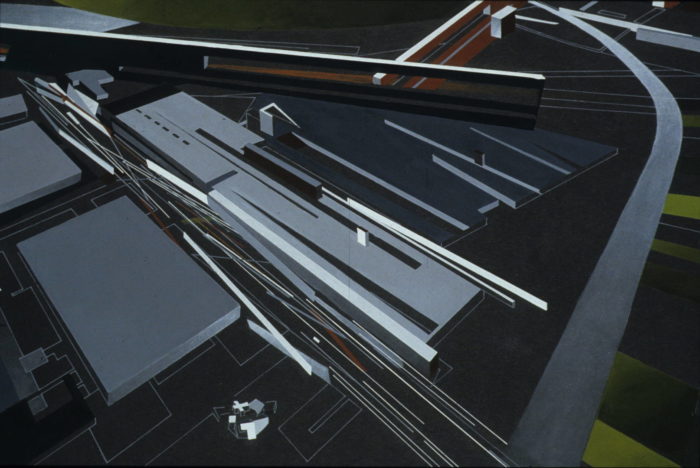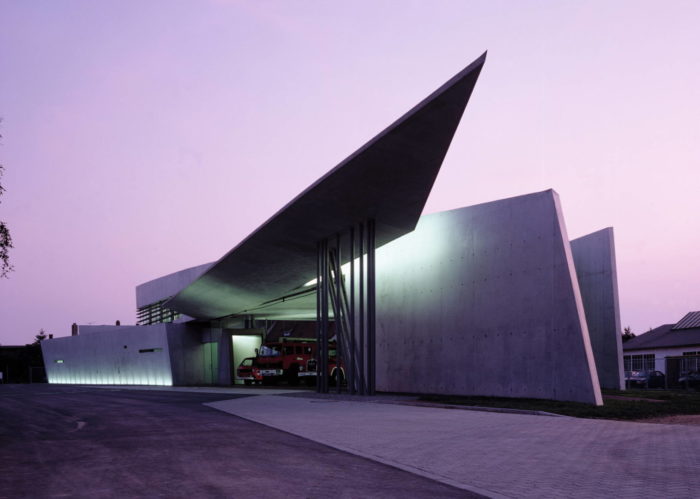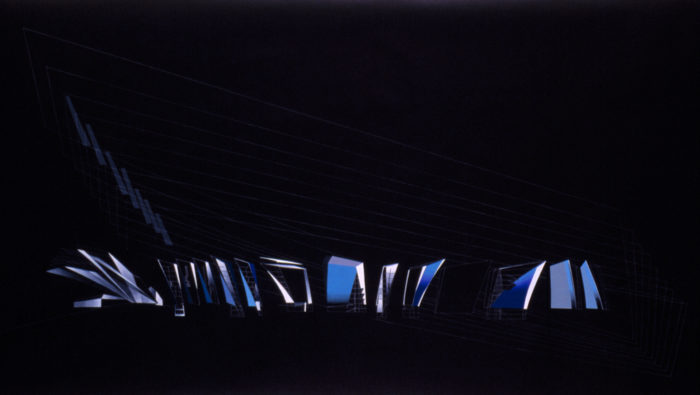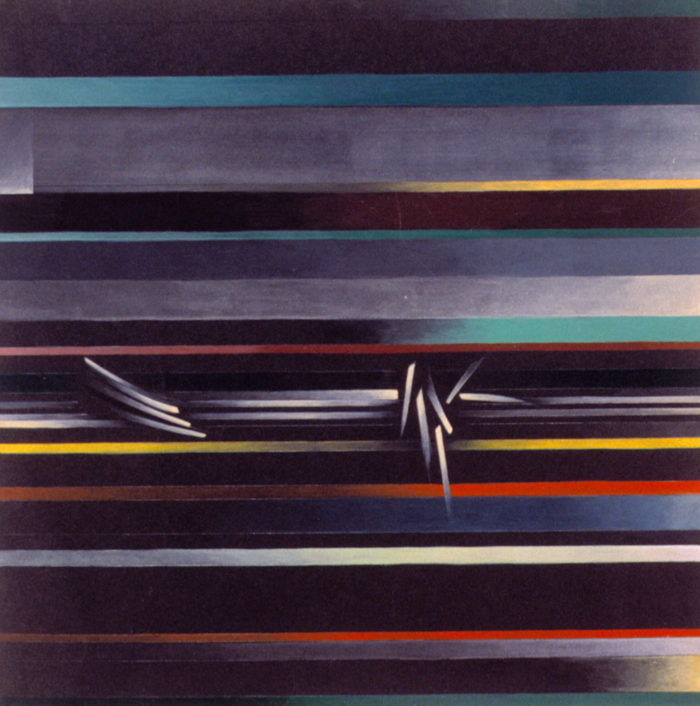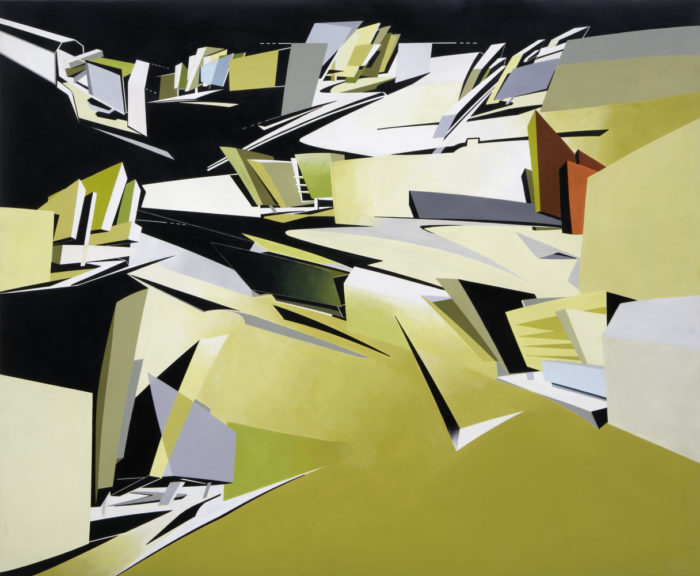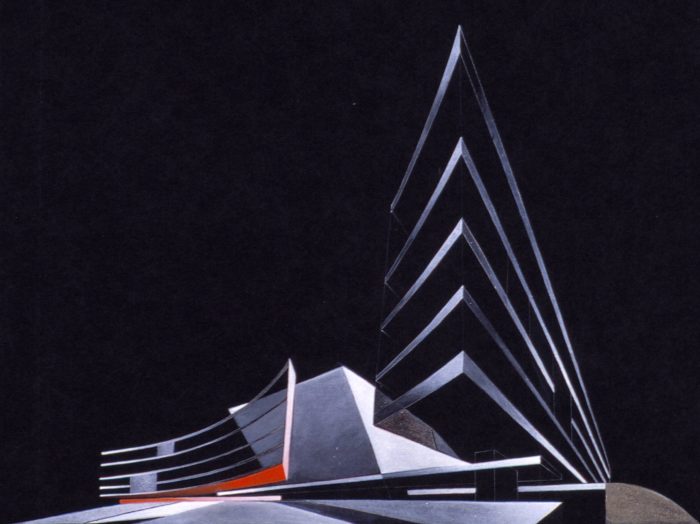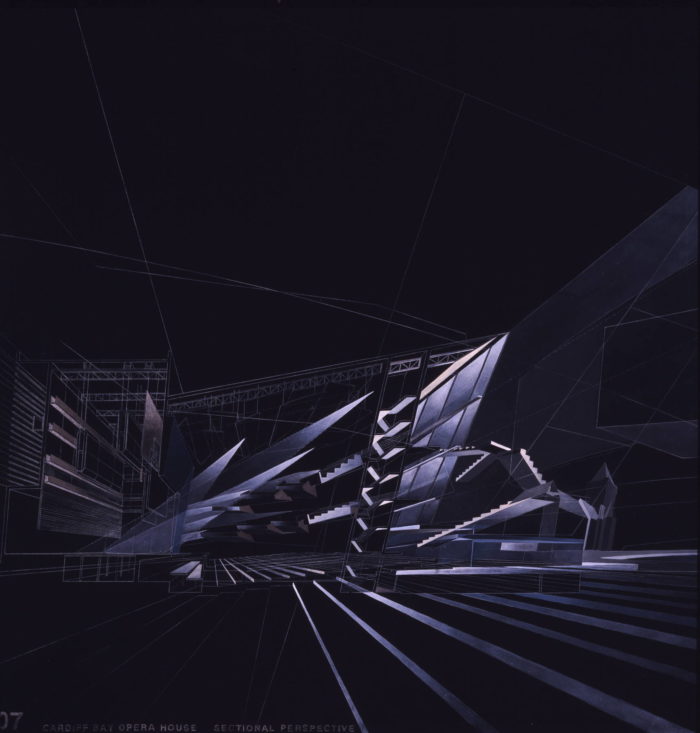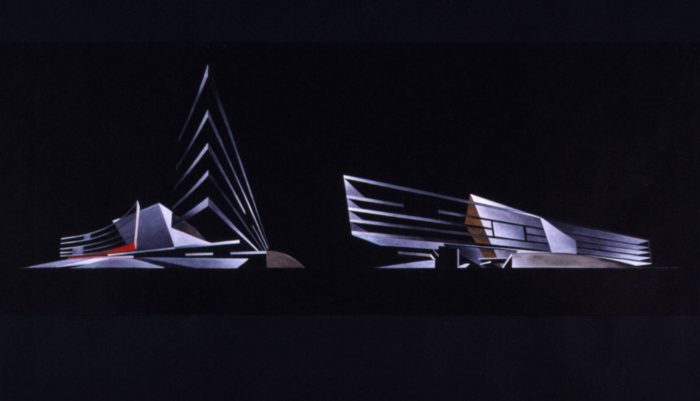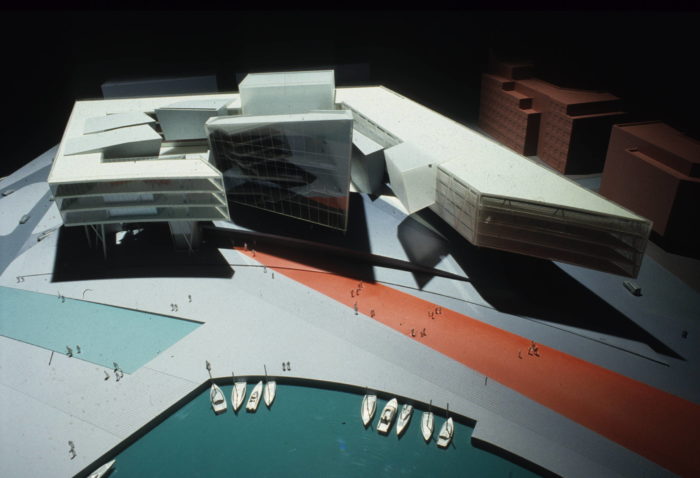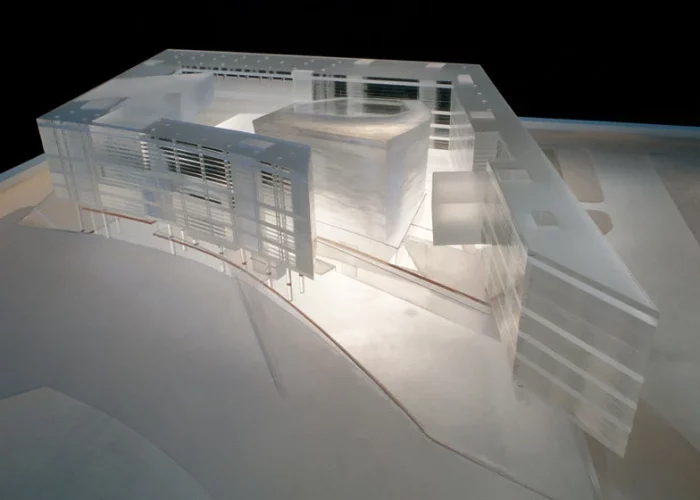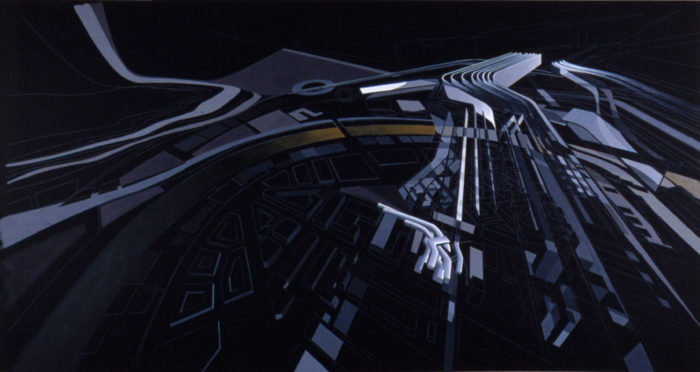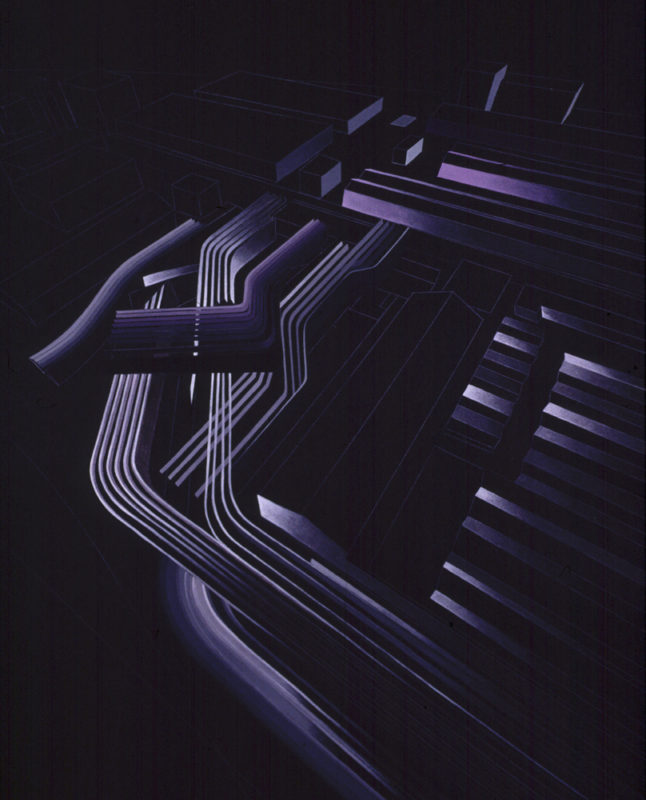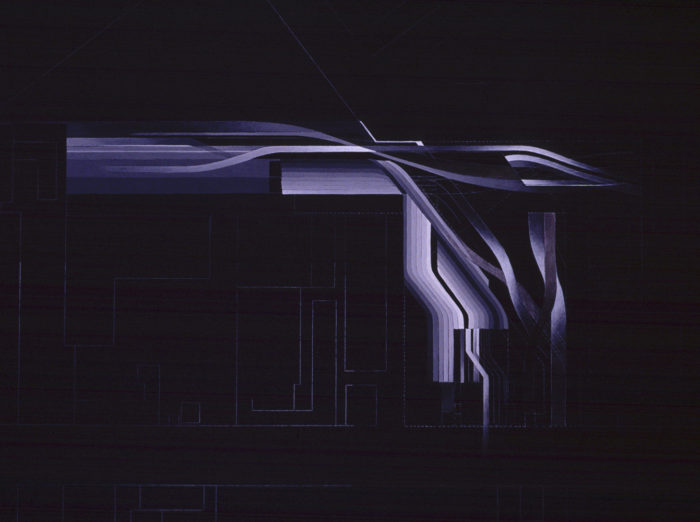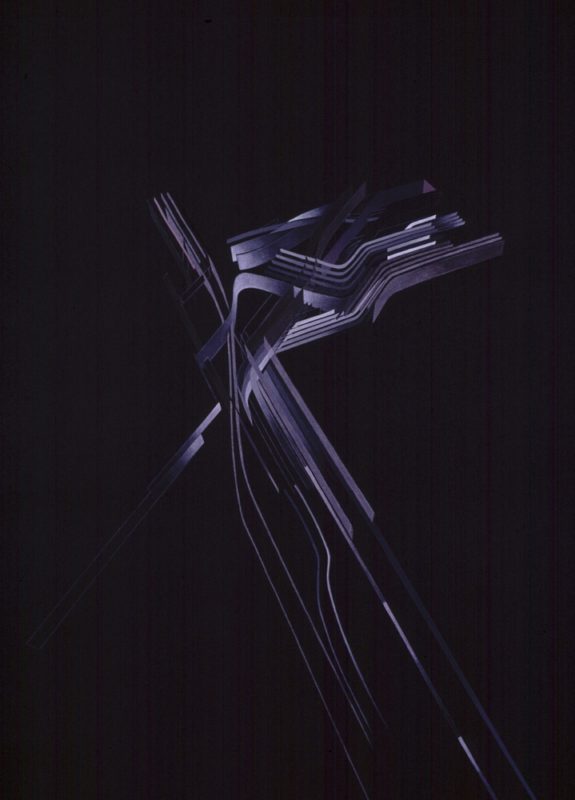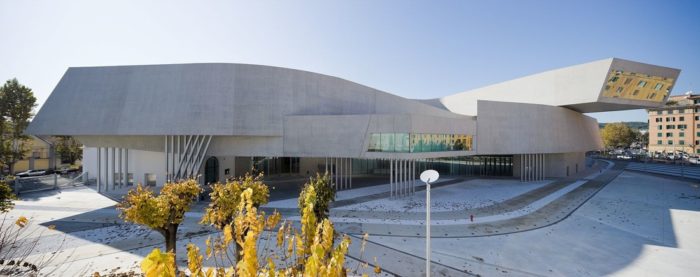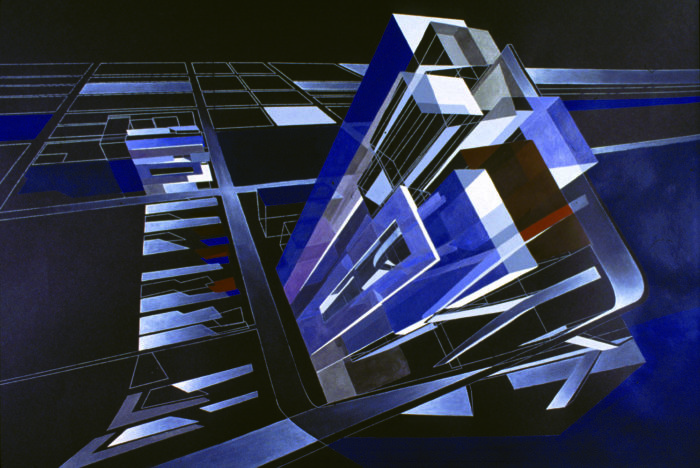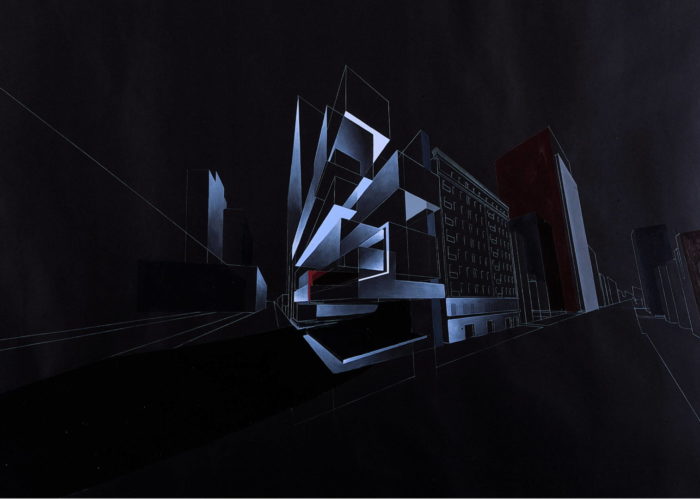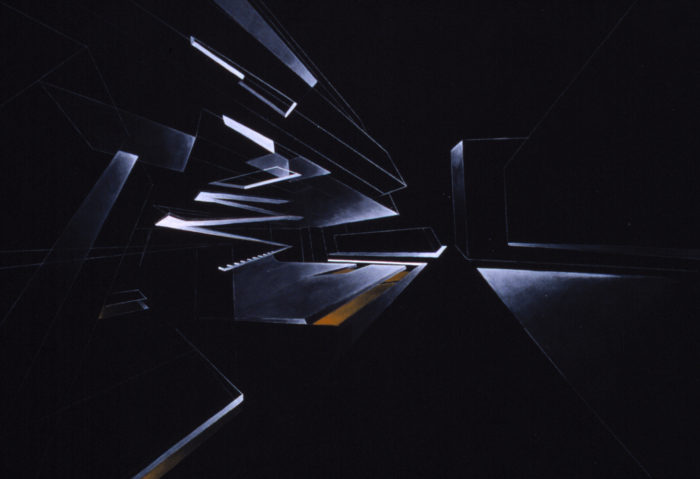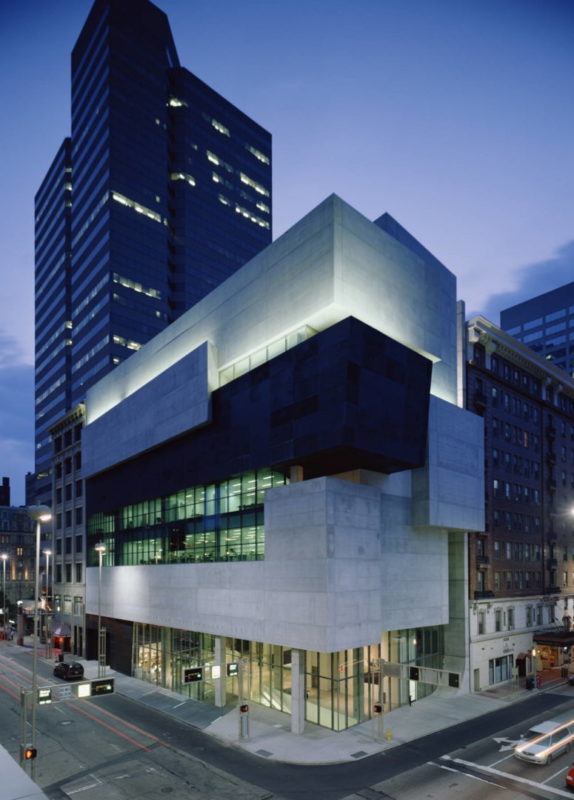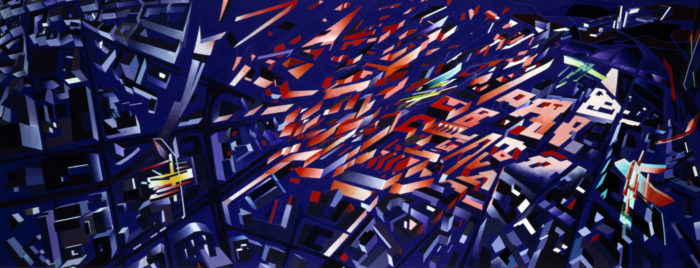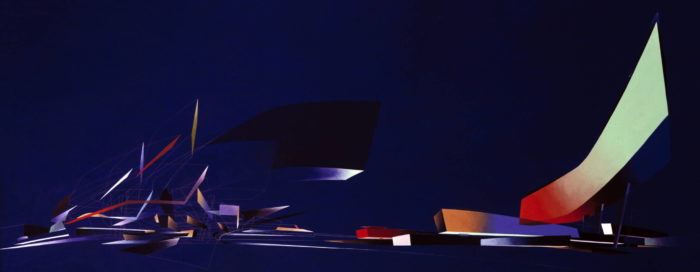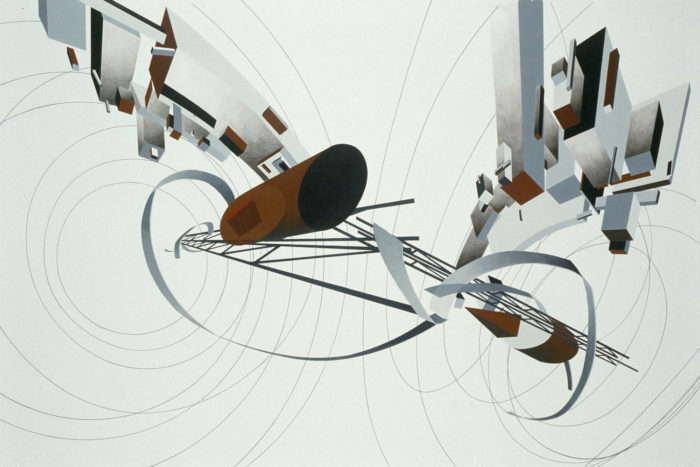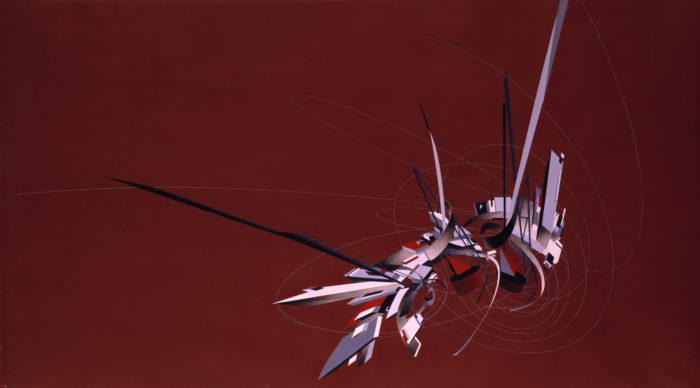When it comes to Zaha Hadid paintings, the same can be said about the revolutionary and forward-thinking nature of her work. Zaha Hadid, a globally acclaimed architect, is known for her conceptual topographical studies that inform the design of many of her buildings, which she then gets involved in with flowing, dynamic, and evocative designs that express the vibrancy of modern urban life.
Hadid relied heavily on drawing and painting in her work. She drew extensively to visualize her architectural concepts, influenced by Malevich, Tatlin, and Rodchenko. Hadid saw painting as a means of design and abstraction as an exploratory framework for conceptualizing the relationship between architecture and the environment around us.
This collection of works on paper and paint reveals an architecture that Hadid was committed to realizing in her buildings, as seen by their signature airiness and delicacy.
Zaha Hadid Paintings
In 1988, Hadid rose to fame after an exhibition of her abstract paintings at New York’s Museum of Modern Art gained critical acclaim.
Many paintings depict masterplan plans for large cities, looking at methods to promote connectedness between urban nodes. The young architect presented lively analyses of modernist architecture and utopianism, drawing upon her background as a mathematician. Here, we delve into some Zaha Hadid paintings, which were crucial to this renowned architect’s planning process.
-
The Peak
Essays on a large-scale urban scale were the starting point for Zaha Hadid paintings, where she explored various masterplan concepts and methods of intercity connectivity. Located on a manufactured mountain, Hadid’s “The Peak” paintings depict a landmark designed to provide a break from the hustle and bustle of Hong Kong.
-
The World
The architect created an abstract design that seems like a satellite image of the planet in “The World (89 degrees),” one of the most well-known Zaha Hadid paintings, to investigate the varied capacities of modern technology and their effects on architecture. A broad, curving horizon cuts across the layout, representing everyday existence’s dynamic, ever-evolving nature.
Also read: The Signature Style of Zaha Hadid in 22 Carpet Designs
Hadid’s bold composition produced a building with tension, movement, and functional advantages: Thanks to its complex facade, firefighters and emergency vehicles can enter and leave the building through various doors.
According to the building’s sequential program, one room naturally leads into the next. This emphasis on fluid movement is evident from the original picture to the finished fire station.
-
The Hafenstrasse Development
Hadid planned the Hafenstrasse neighborhood in Hamburg, Germany, to fill in the gaps between rows of classic vertical houses. The visual compositions suggest a series of terraced, permeable buildings that lead down to the Elbe river.
-
Cardiff Bay Opera House
Deconstructivist in style, Zaha Hadid paintings for the Opera House fell within the worlds of schematic design and abstract art; they were part of a winning competition proposal that was never built. There are recognizable architectural features, such as staircases, beams, and rafters. Still, the compositions are never exact, instead showing the sense of movement that Hadid aimed to achieve in the completed structure.
Hadid’s shattered planes appear to float or perhaps soar, freed from the limits of gravity essence in three-dimensional models. The architect hoped that this sense of drama would leave an indelible mark on Cardiff’s urban landscape.
In the 1980s, while Hadid was still a young architect trying to bring her theoretical principles into the actual world, she painted and designed with boldness reflected in the geometrical strokes and vivid purple tones found throughout each piece.
-
MAXXI: Museum of XXI Century Arts
Hadid’s Museum of XXI Century Arts in Italy’s capital city features paintings that employ various scales to depict the minute nuances of individual architectural parts and the city’s dynamic energy as a whole.
Each piece of art is dominated by a series of flowing lines at once highly linear and expressively fluid, exploring ideas of connectedness and dynamism that would be rendered concrete throughout the finished structure.
The constant movement of cars and people through Rome’s streets is symbolized by bright ribbons that meander from front to rear. The building’s curved shapes mirror one another, creating a flowing environment where visitors can easily wander from one exhibition to the next.
The upper overhanging volume finishes in a large picture window that looks over the city, serving as a striking symbol for the building.
-
Lois and Richard Rosenthal Center for Contemporary Art
Cincinnati’s Rosenthal Center for Contemporary Art, painted by Hadid before its construction, now stands on the bank of the Ohio River, looking like her paintings did before.
The building’s dynamic group of protruding blocks arises from the careful slicing and dicing of a solid cube. This design choice reflects the firm’s aim to make the structure look constantly changing while its neighbors remain unchanged. Since the building’s design is so open, it might be interpreted as an enlargement of the public plaza below.
The shattered block concept depicted in the artworks made it possible to use a wide range of façade treatments, including concrete, steel, and glass, to represent the varying needs of the various floors and their respective programs. Like other Zaha Hadid paintings, the building is divided by ramps and stairs connecting the café, galleries, and theatre on multiple levels. This design is evocative of a complex three-dimensional puzzle.
-
Victoria City Aerial
Hadid’s “Victoria City Aerial” was her submission to a public competition to build an urban development plan for what was then West Berlin; it featured an urban setting organized around thematic corridors at varying heights to bring business and culture to the region.
-
The Great Utopia
‘The Great Utopia,’ an exhibition on Russian Constructivism at New York’s Guggenheim Museum, commissioned Zaha Hadid to curate a collection of paintings and sketches in 1992. In response, Hadid recreated works by Russian painters, including Kazimir Malevich and Vladimir Tatlin, including their 1919–1920 monument Monument to the Third International.
If you liked this, you might also like the following:
